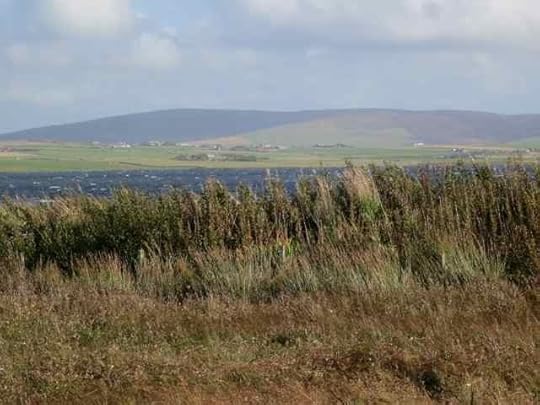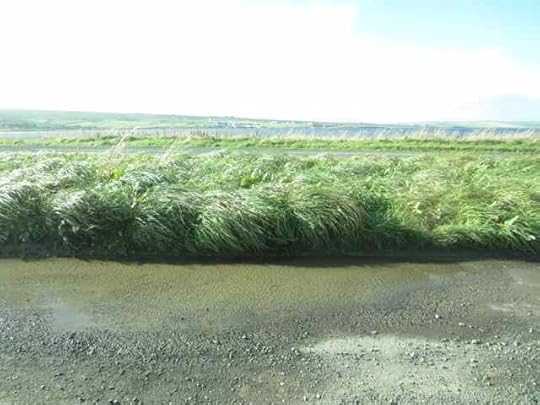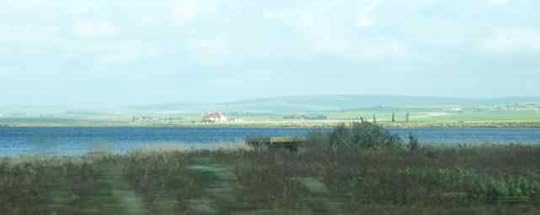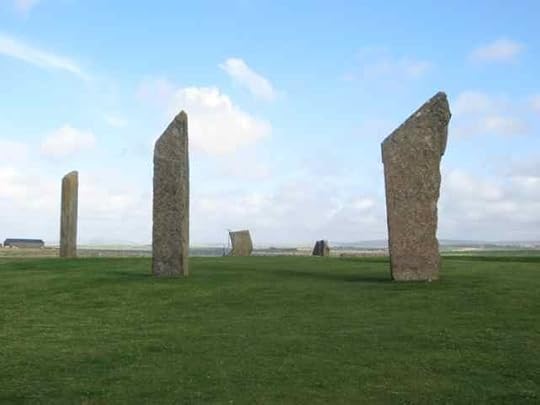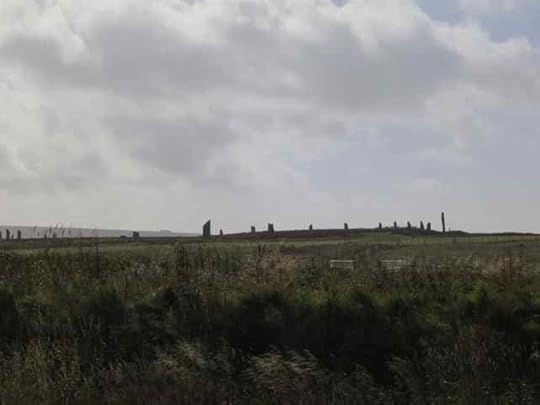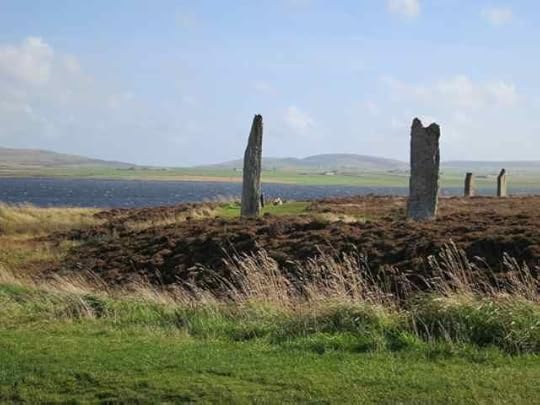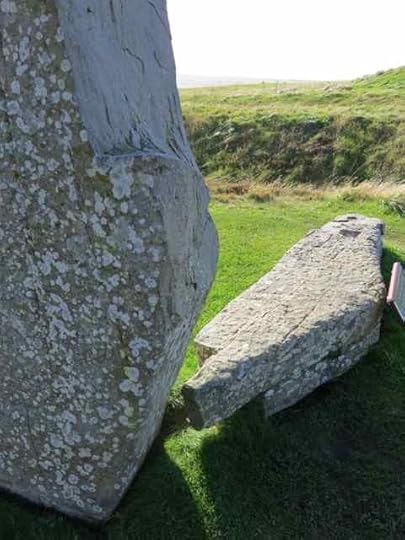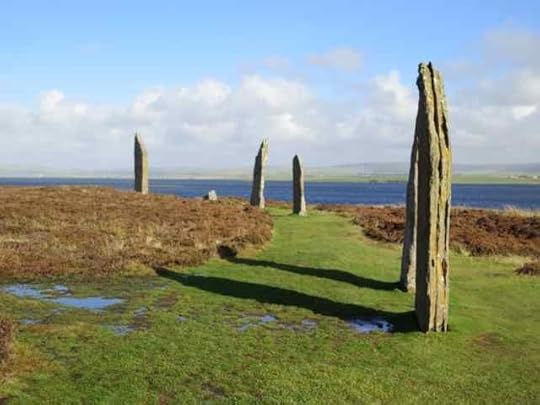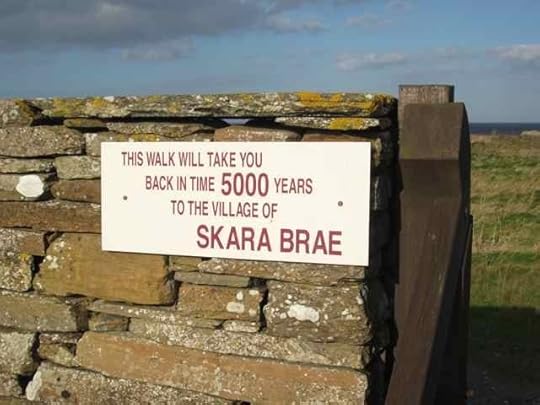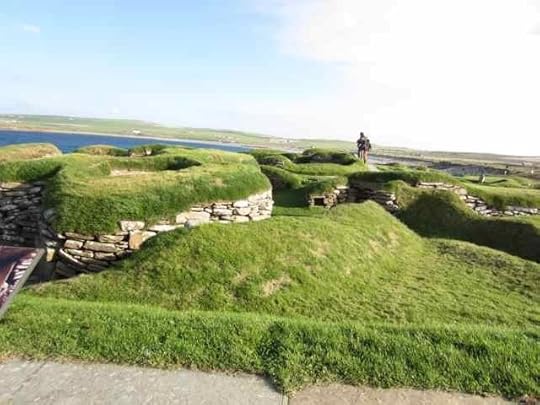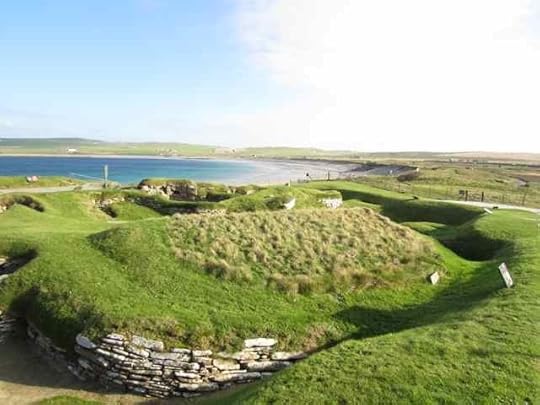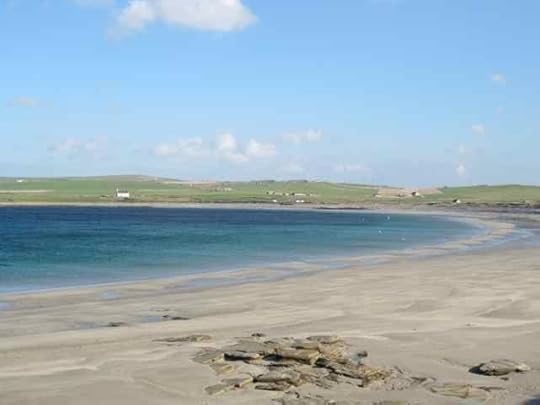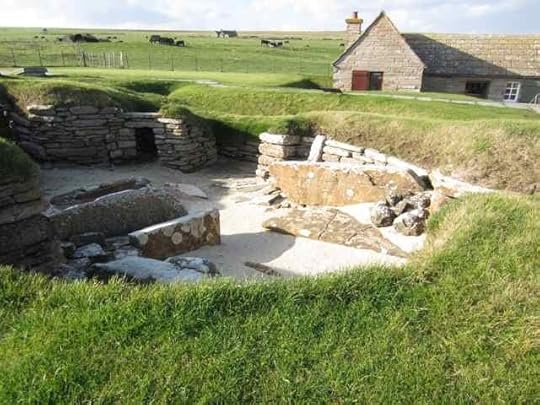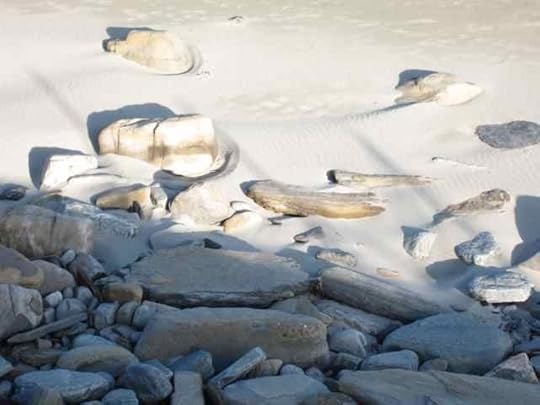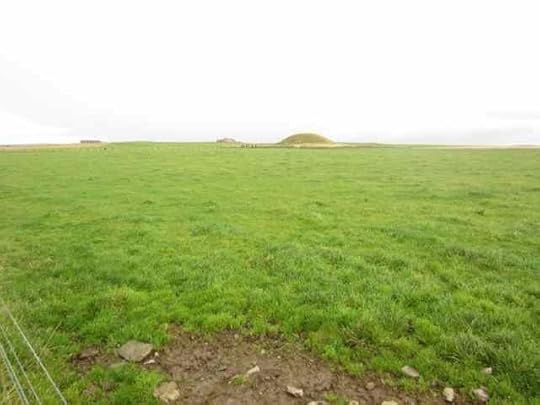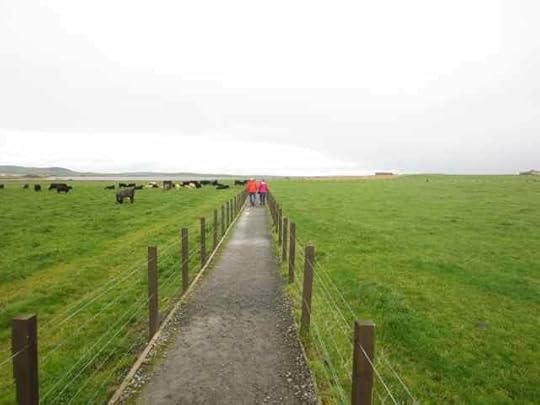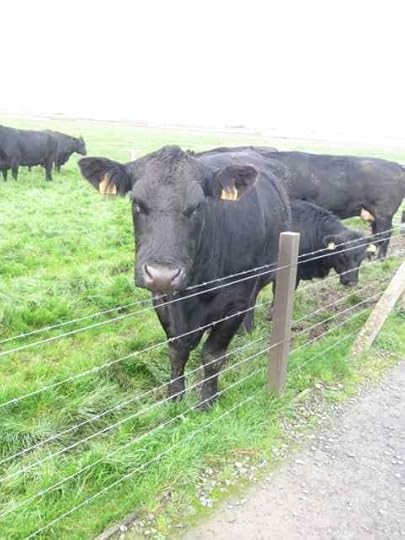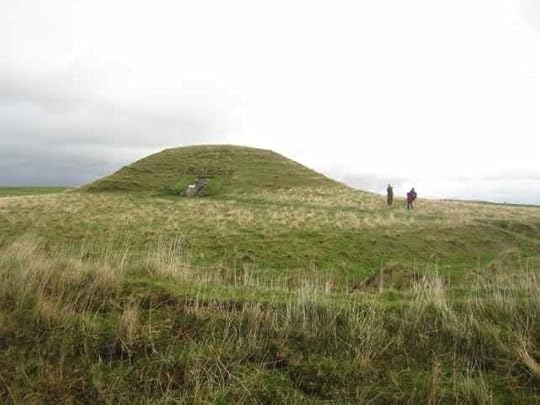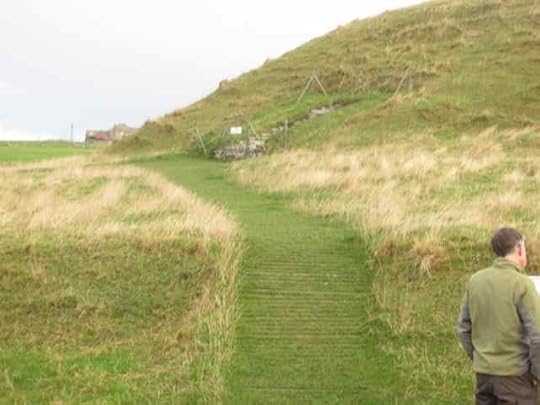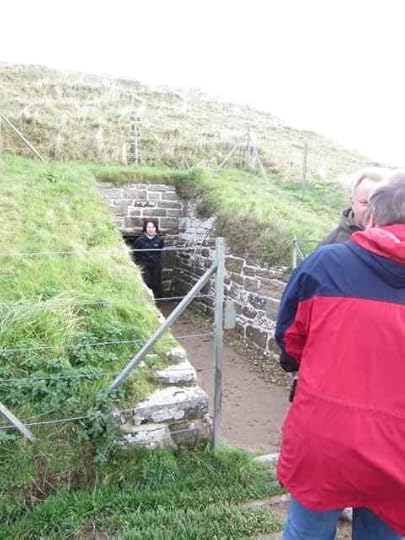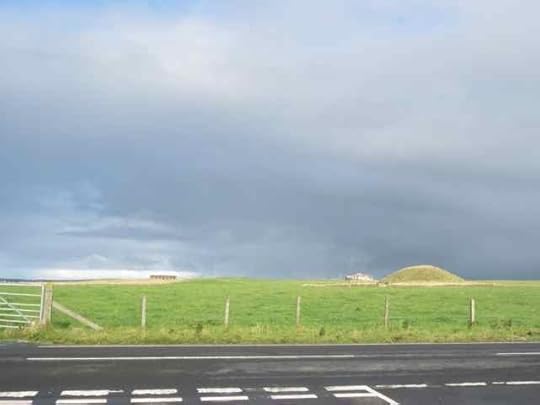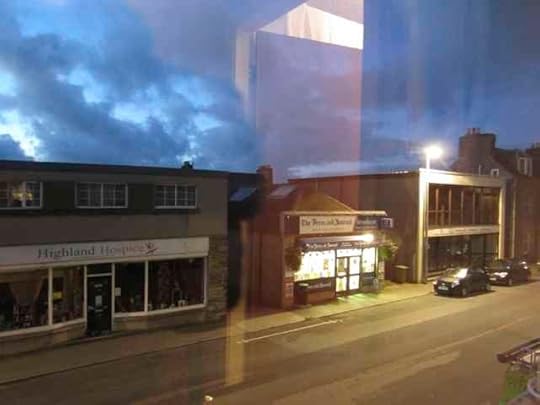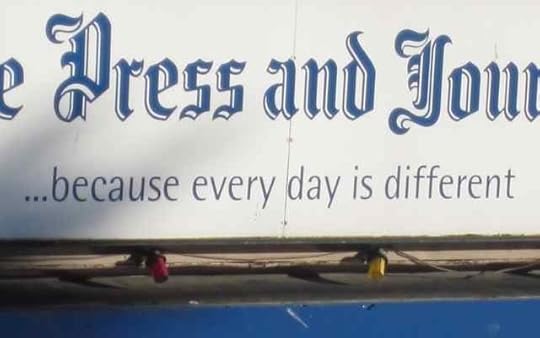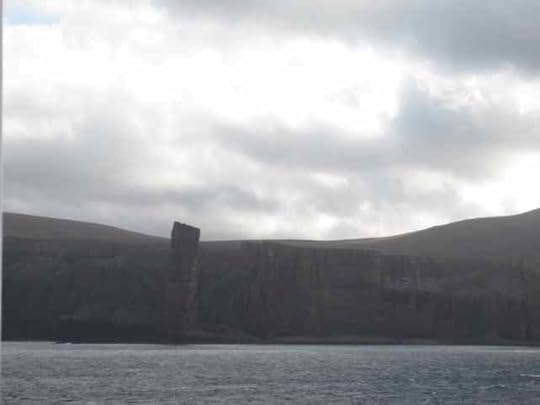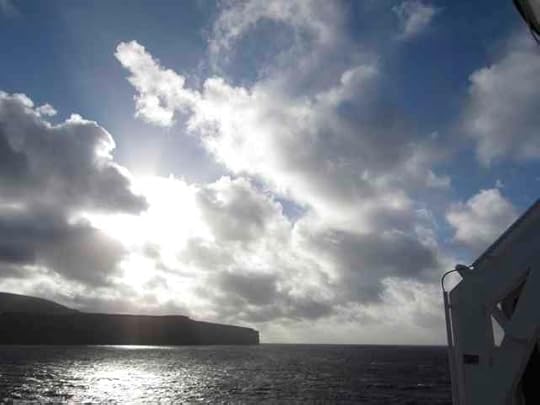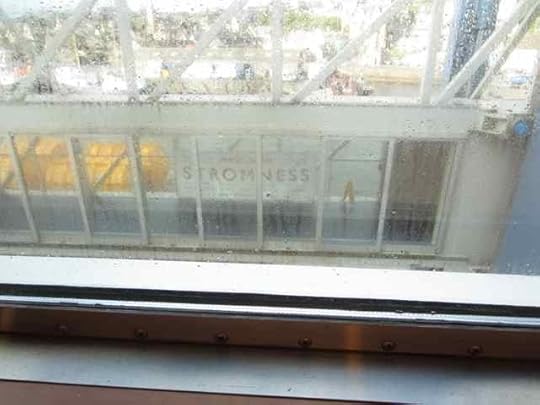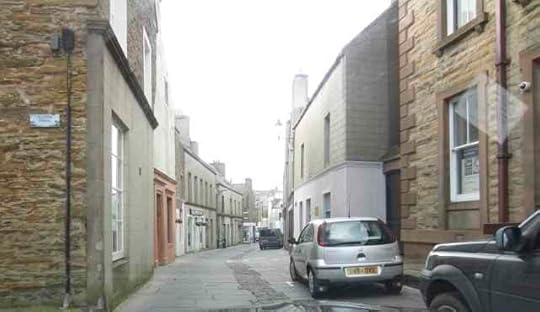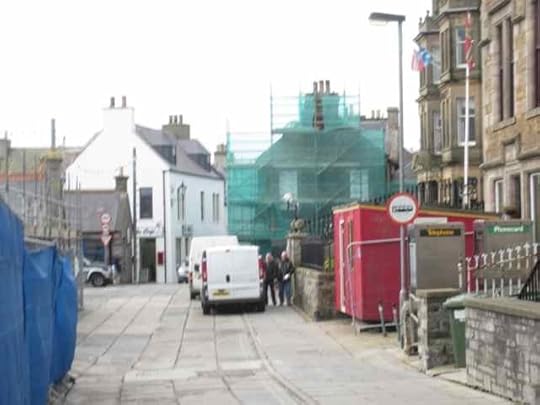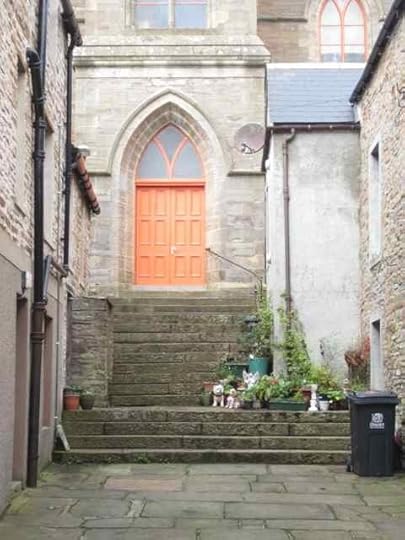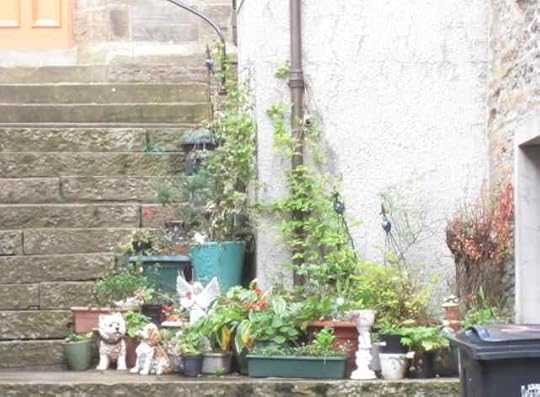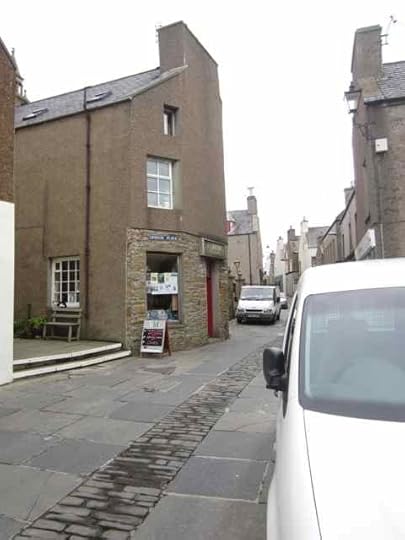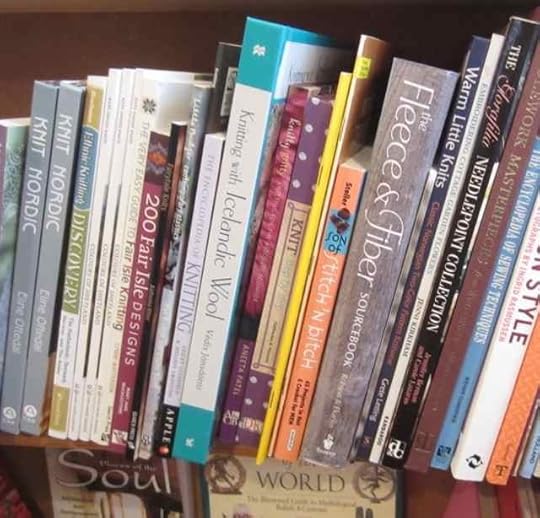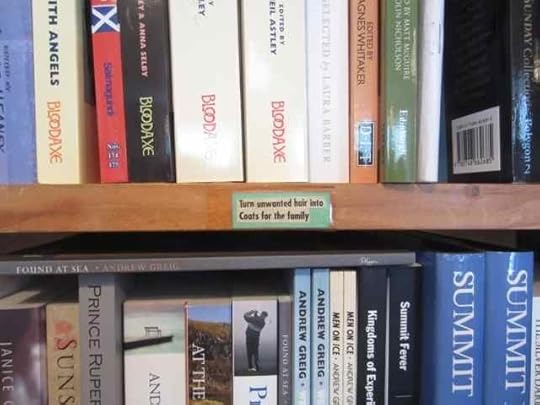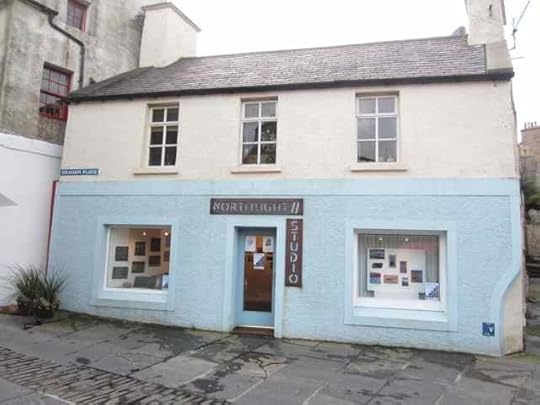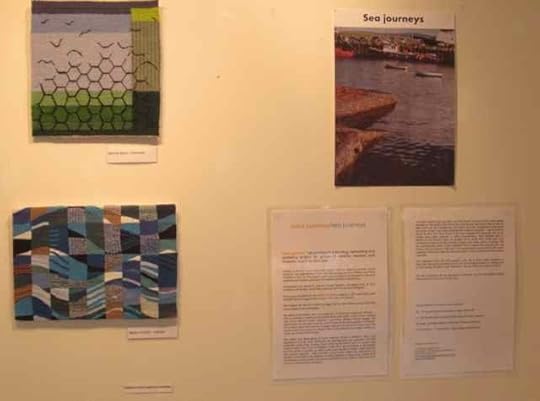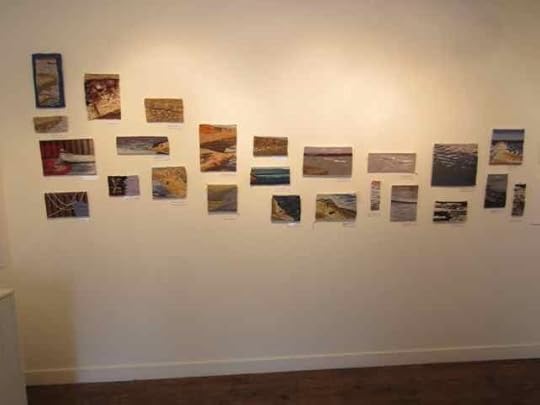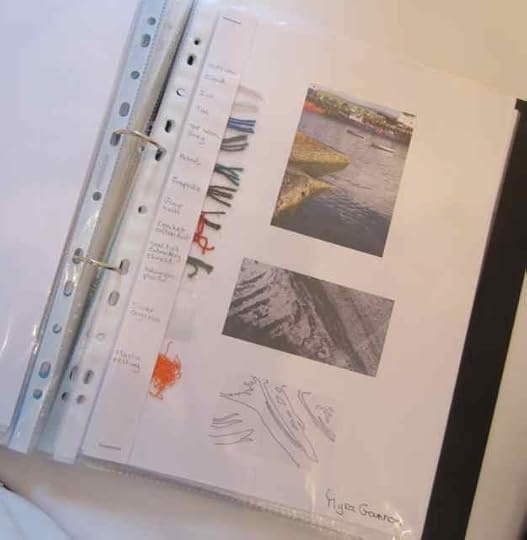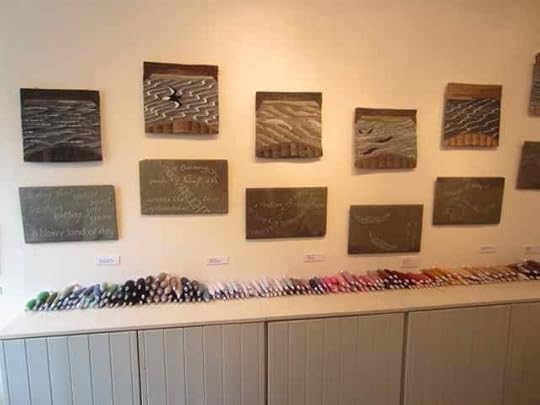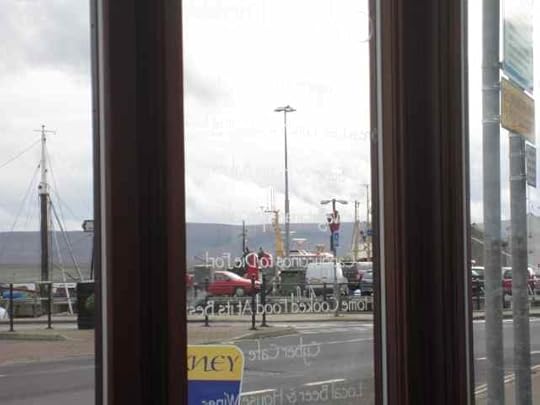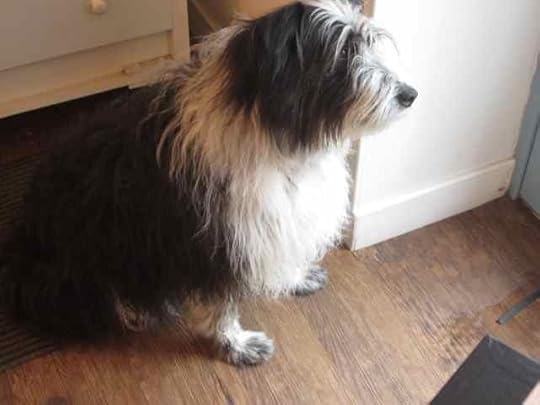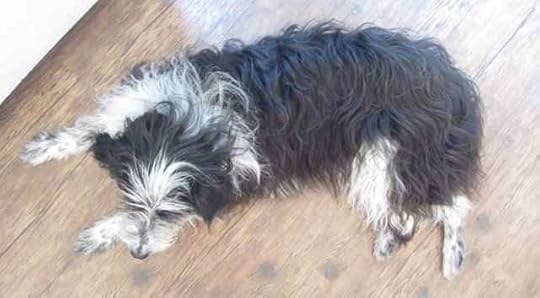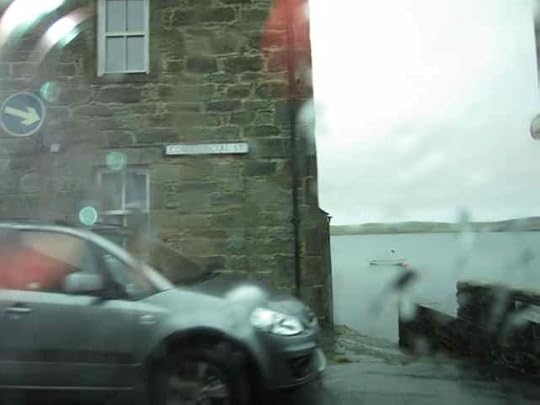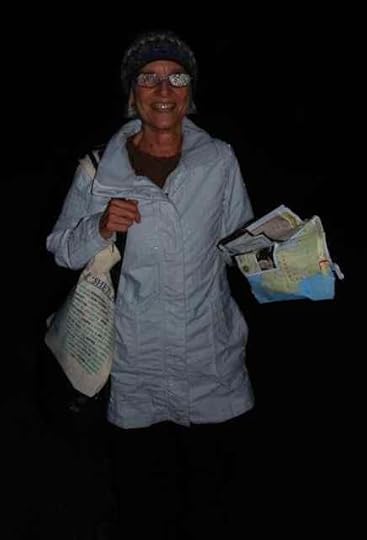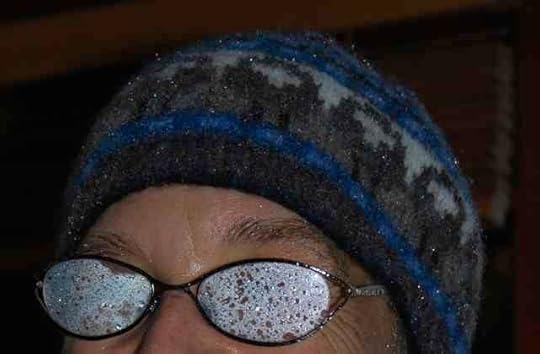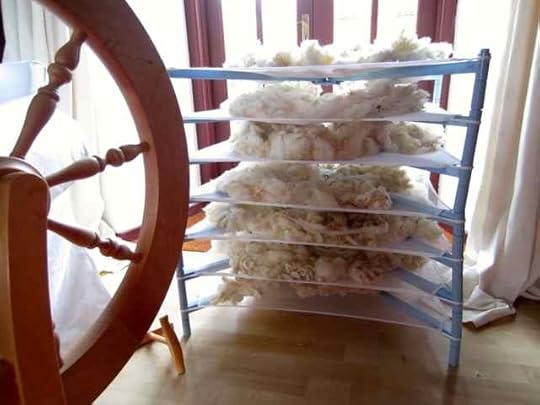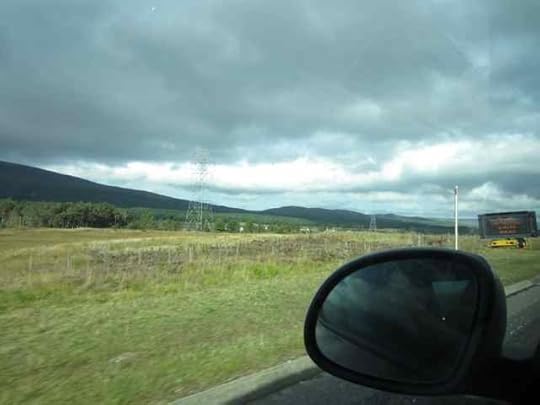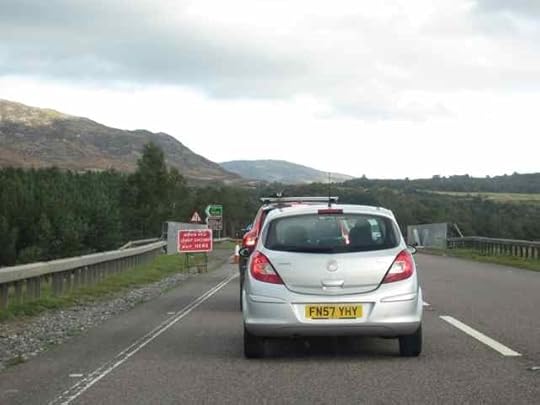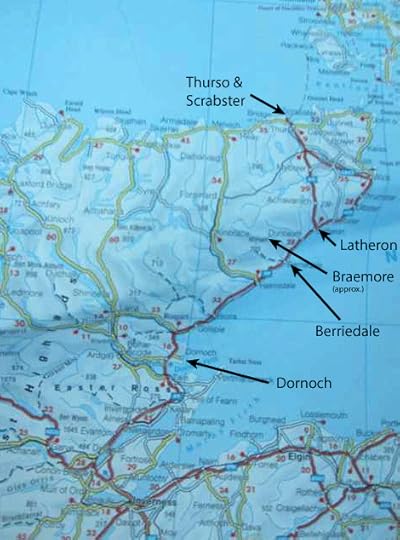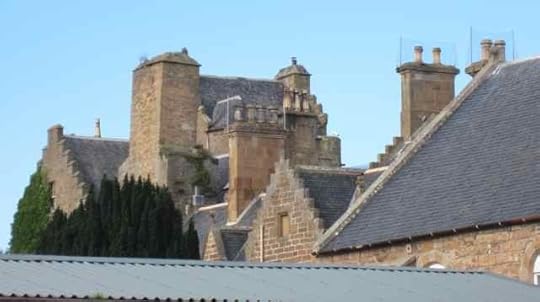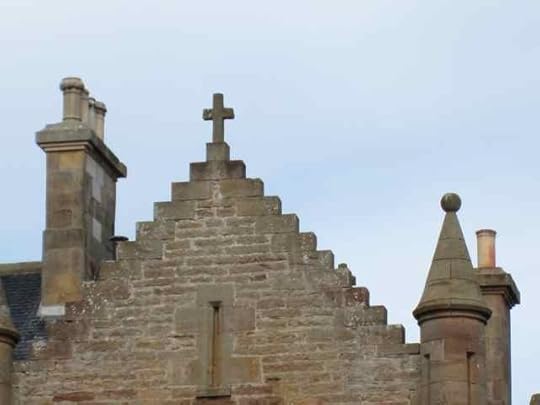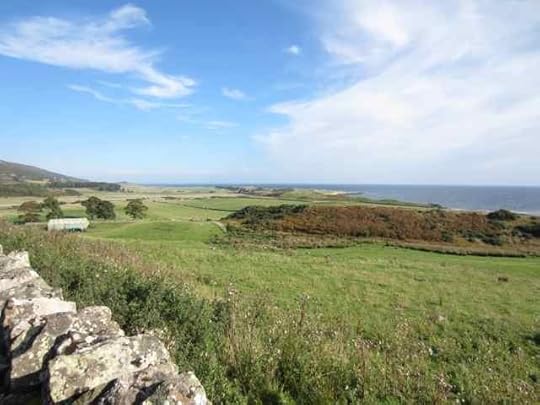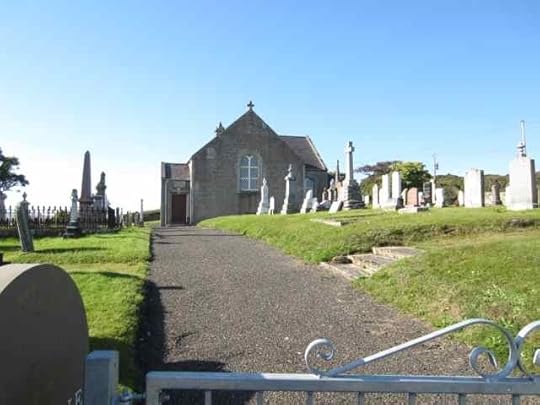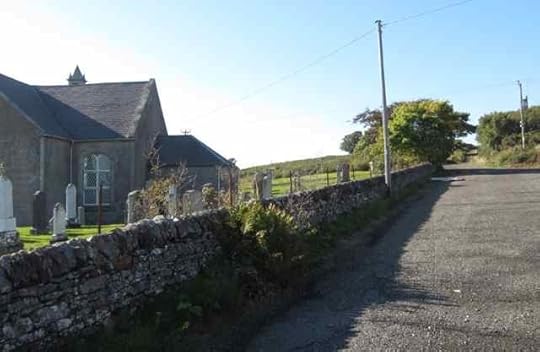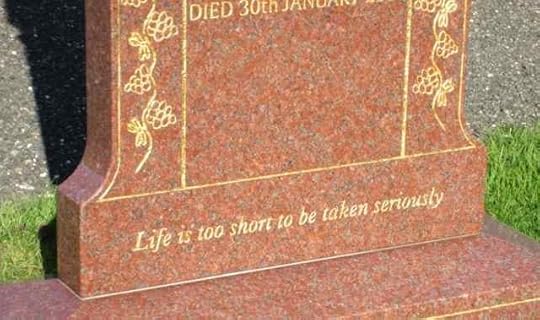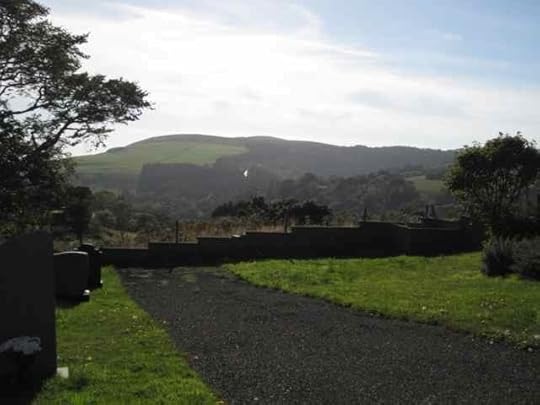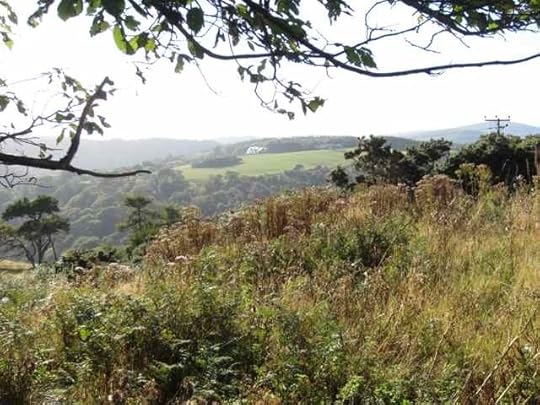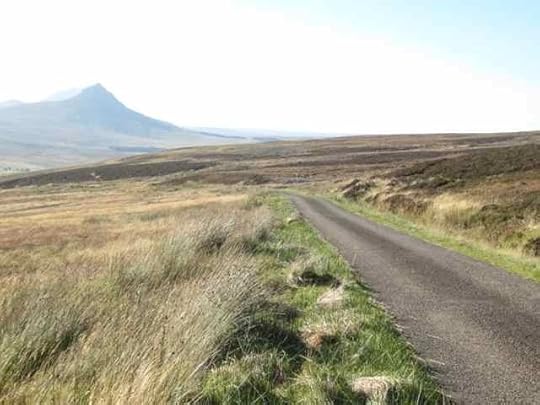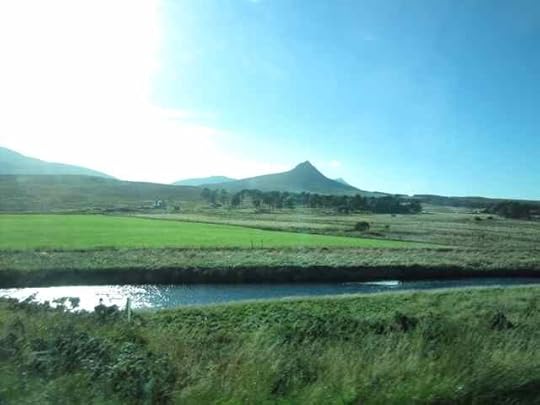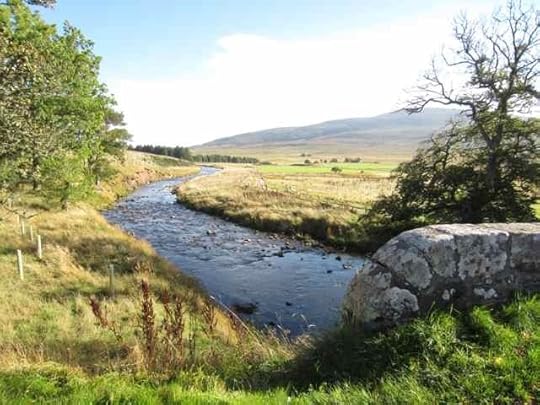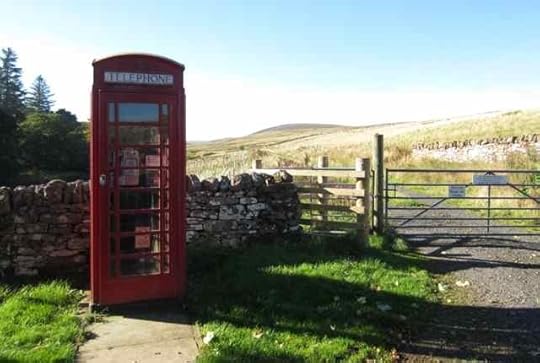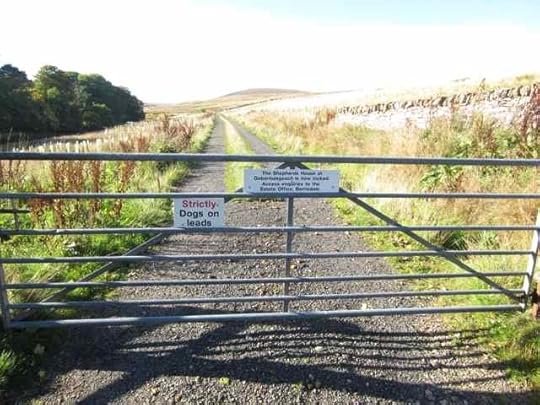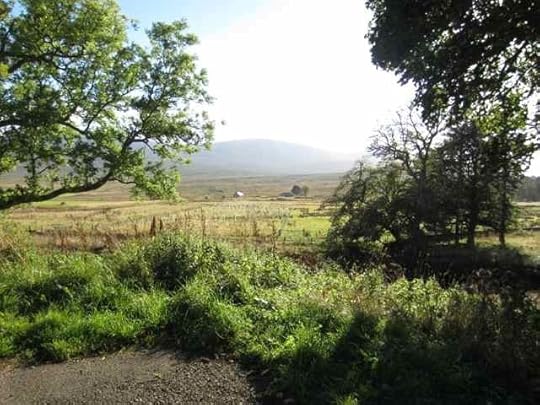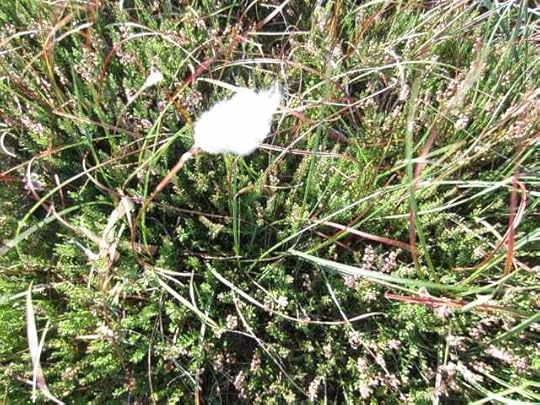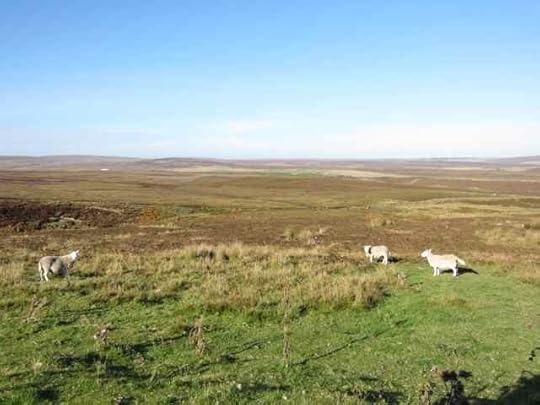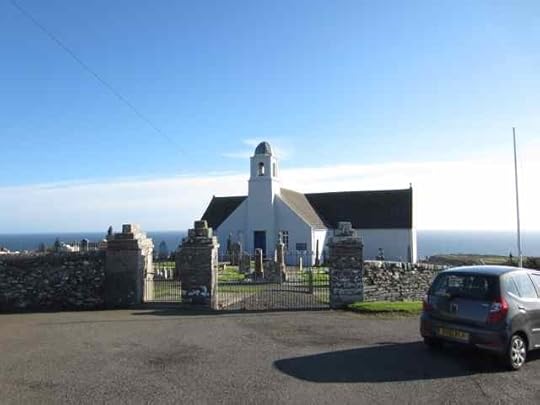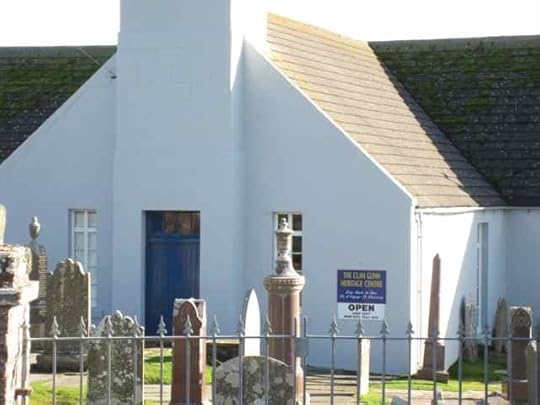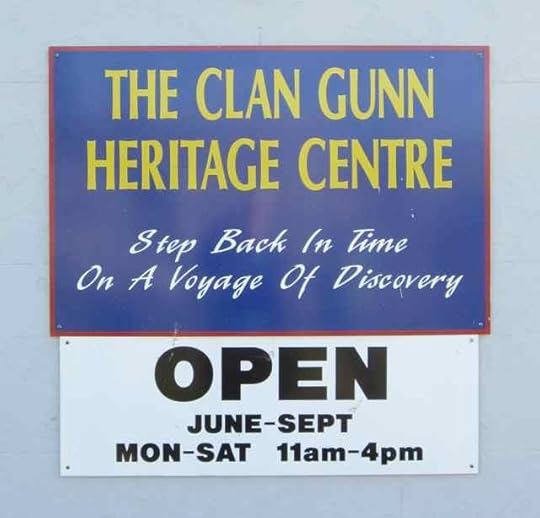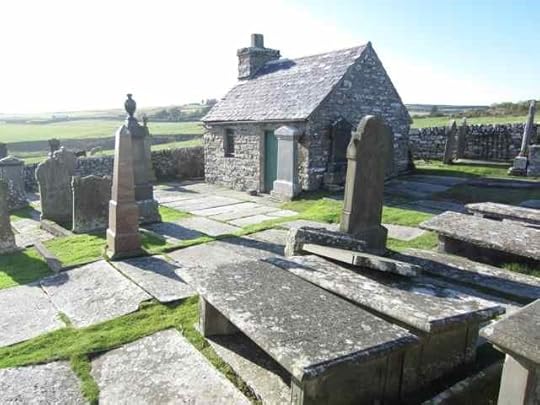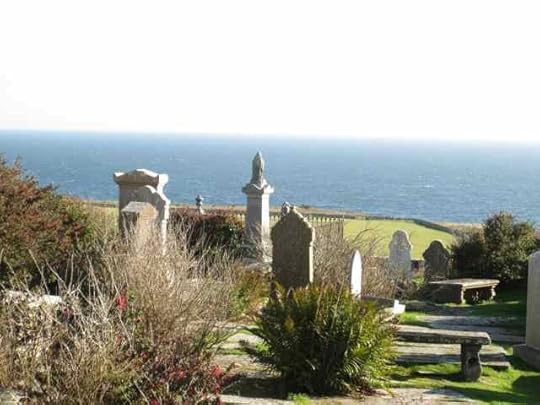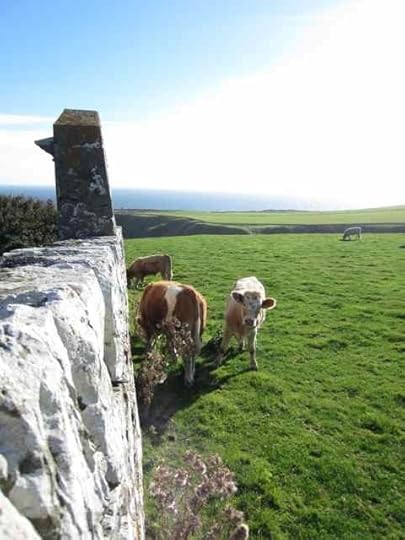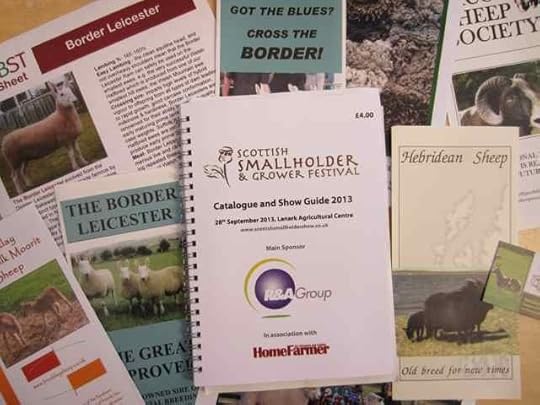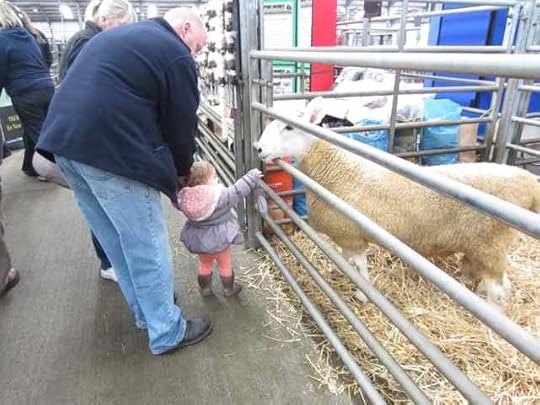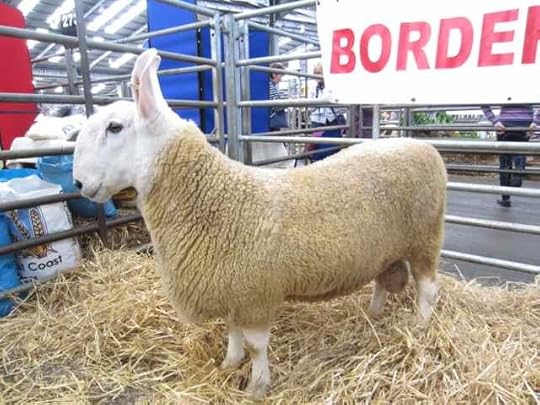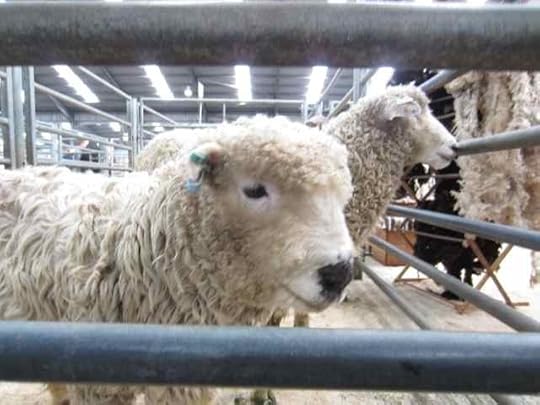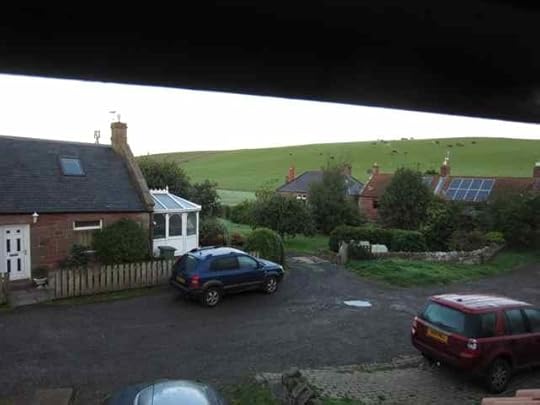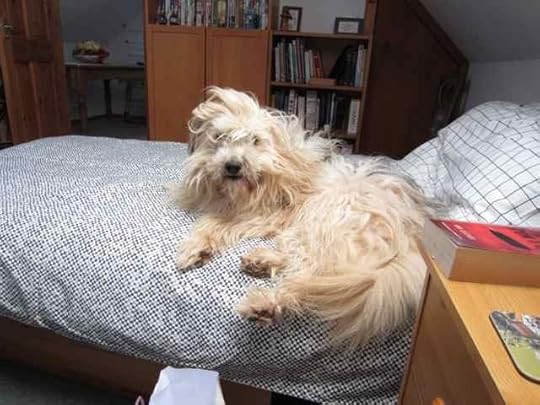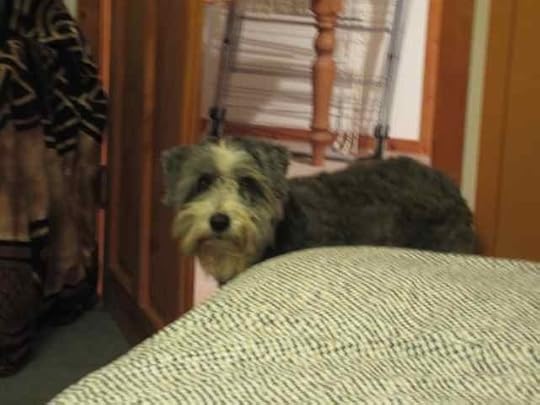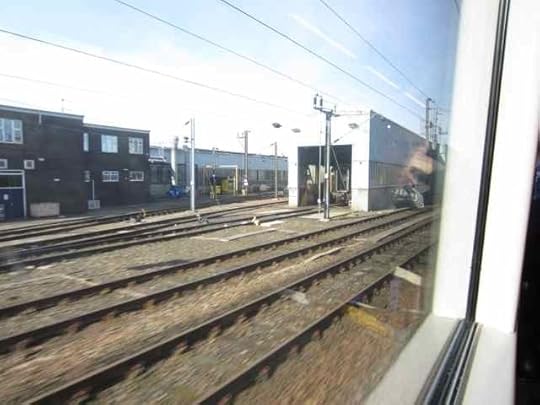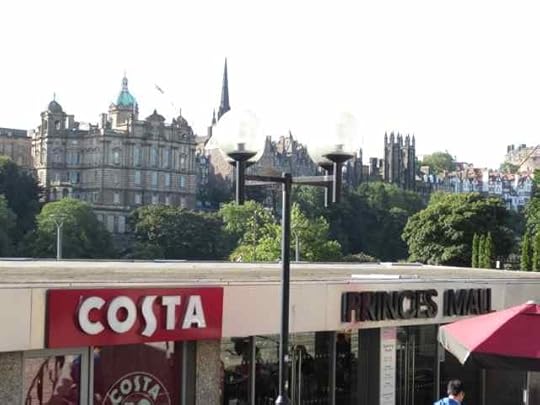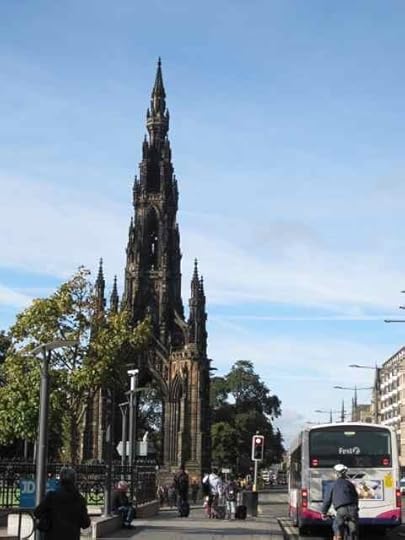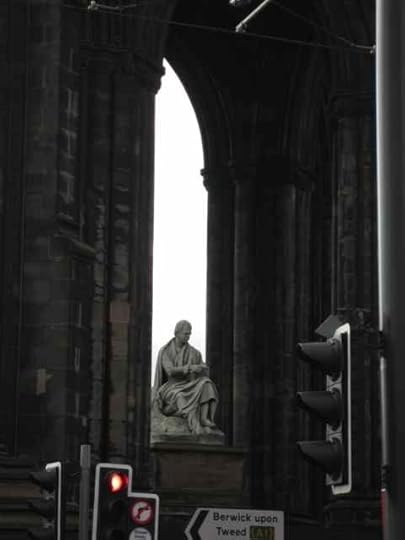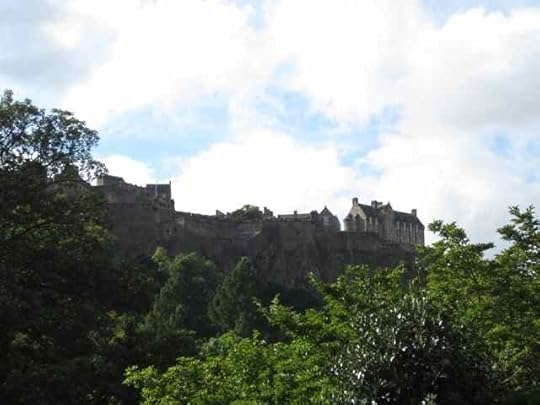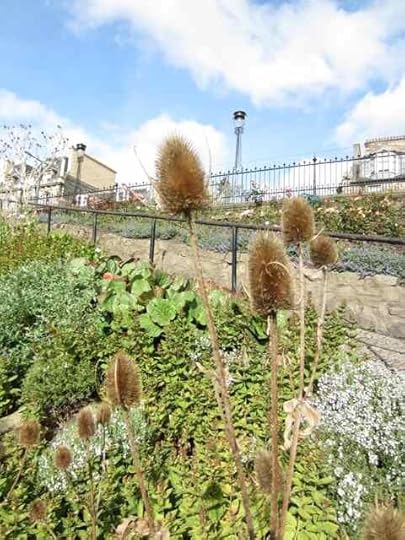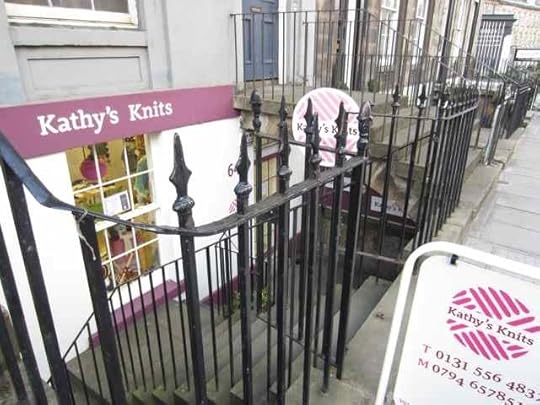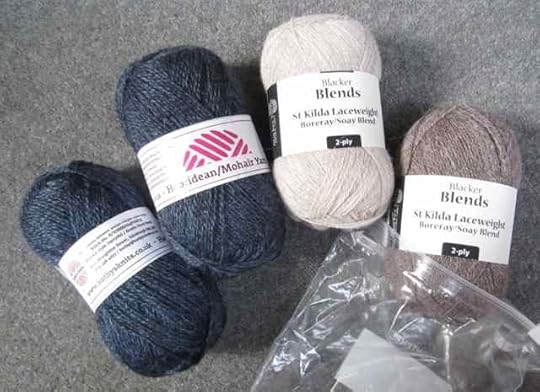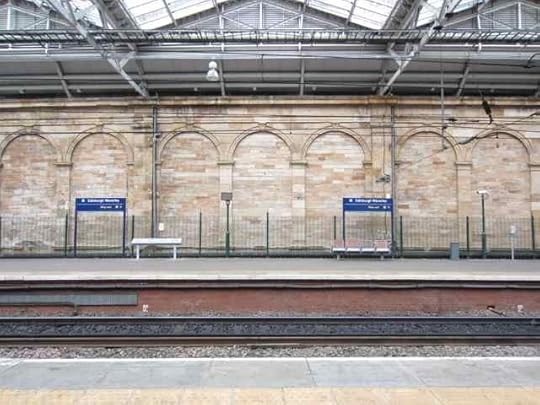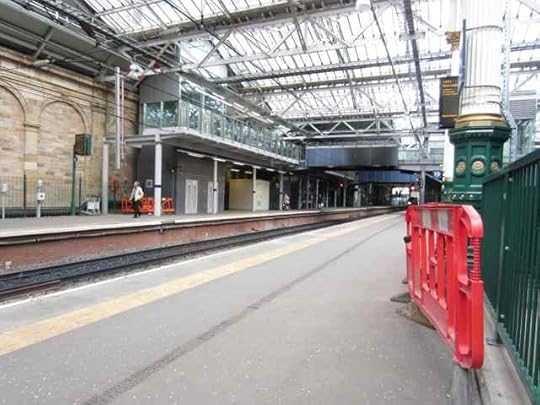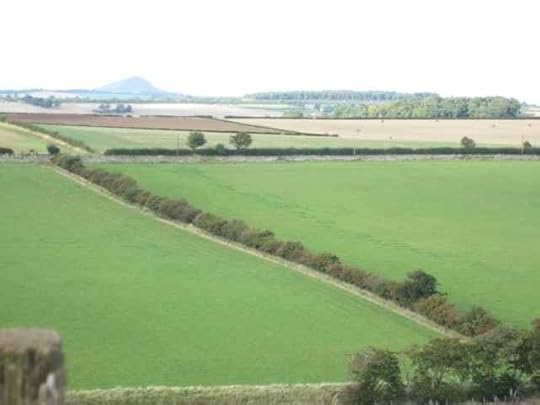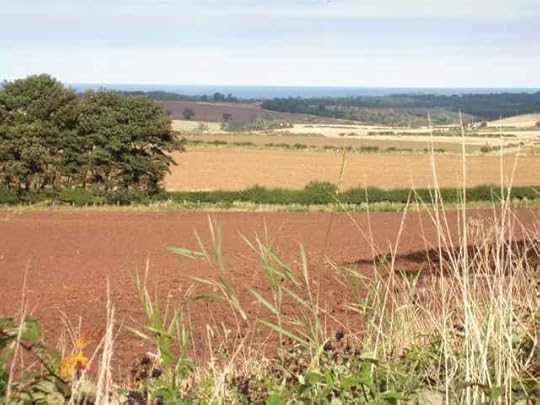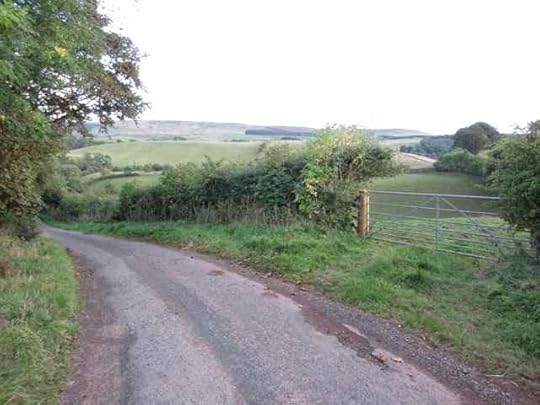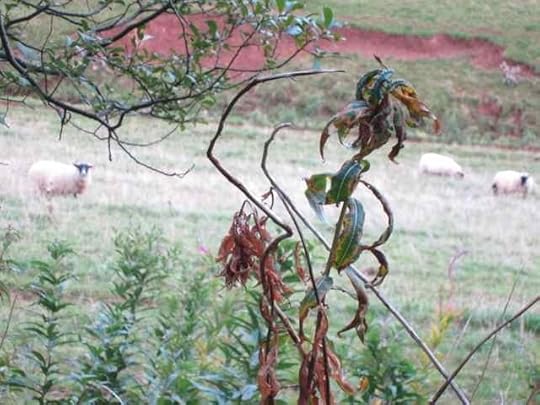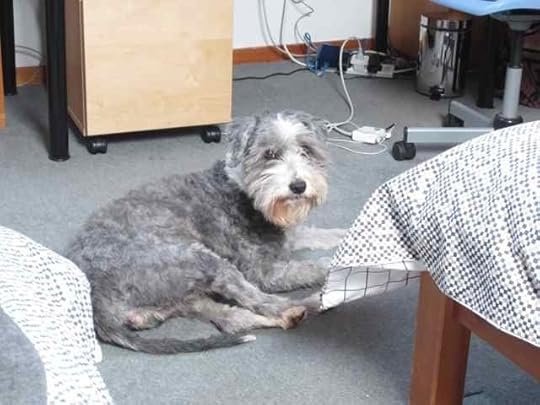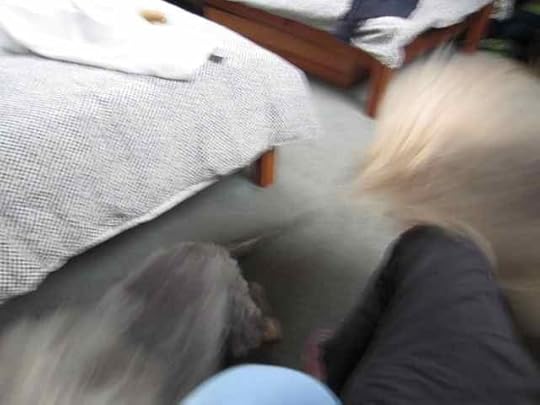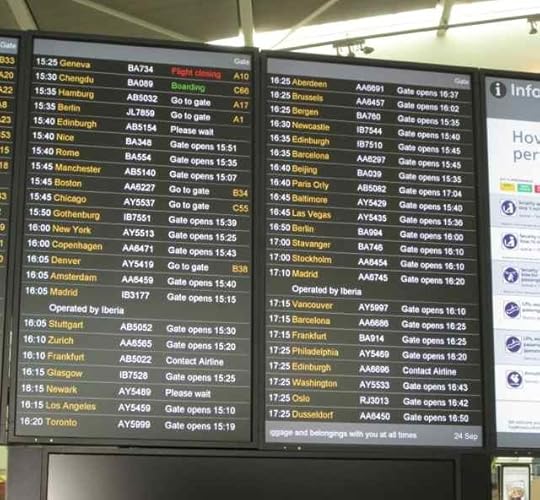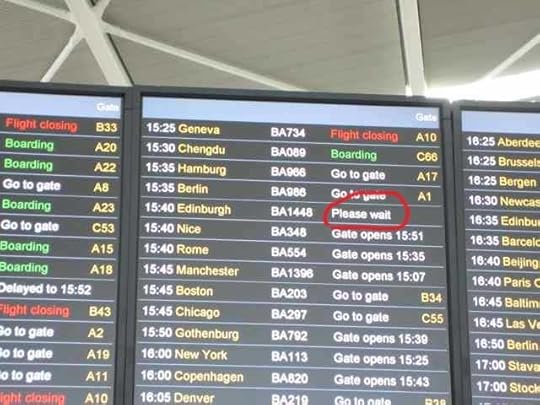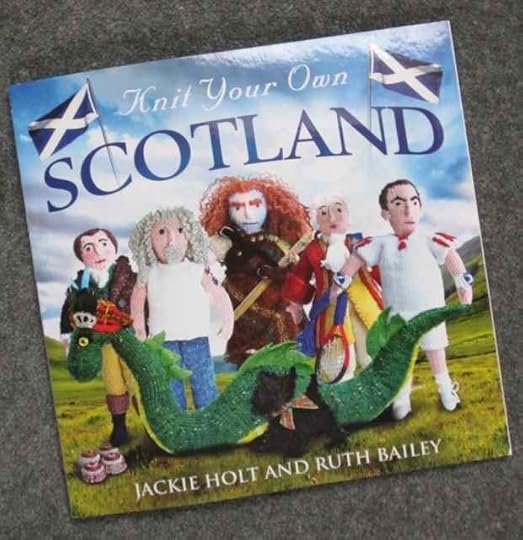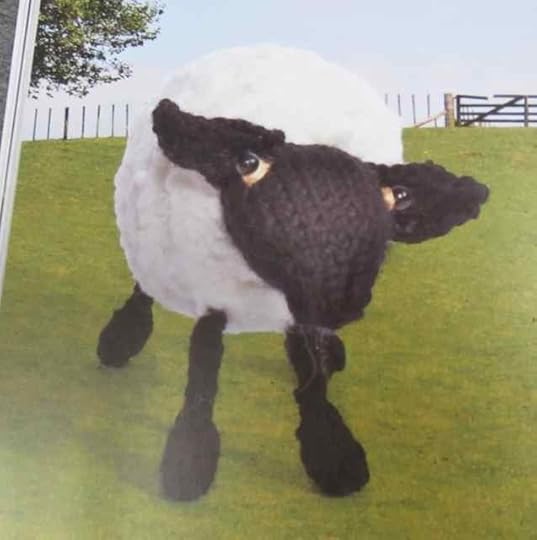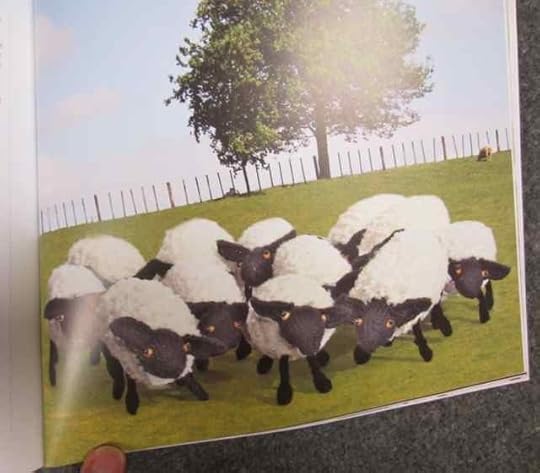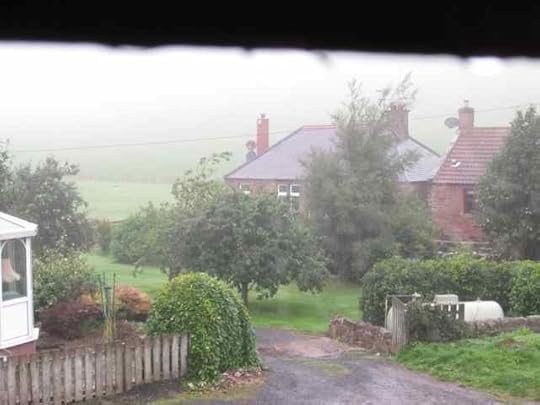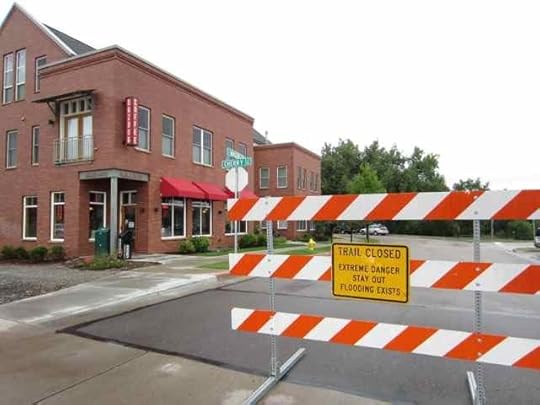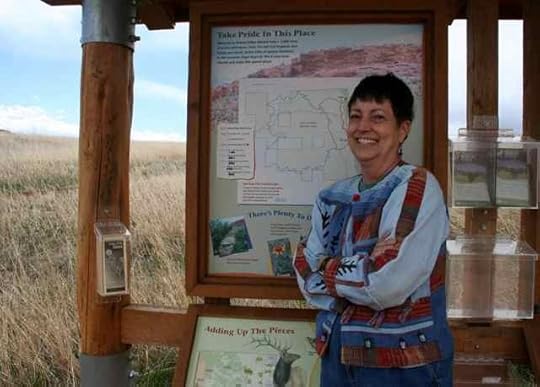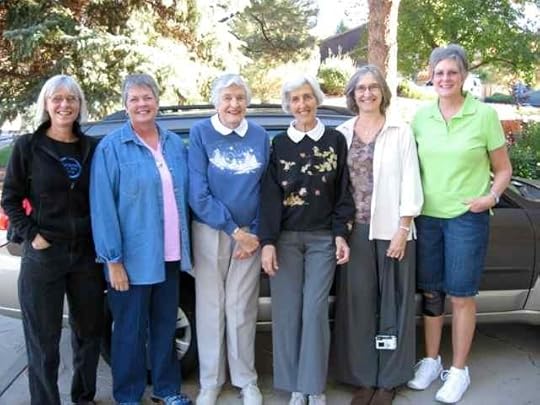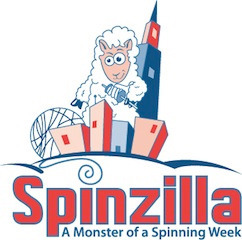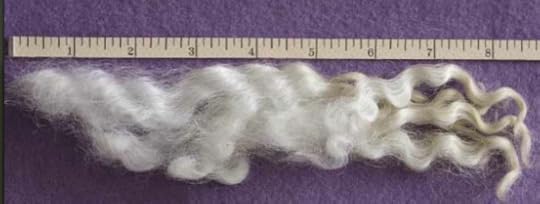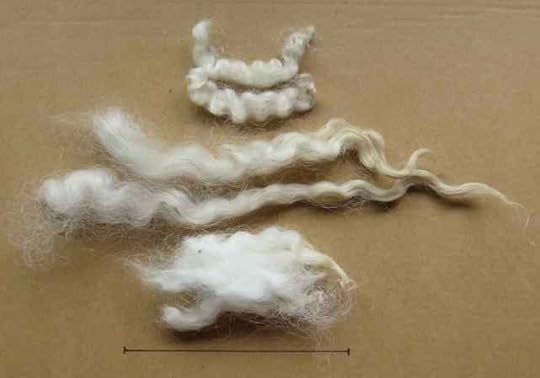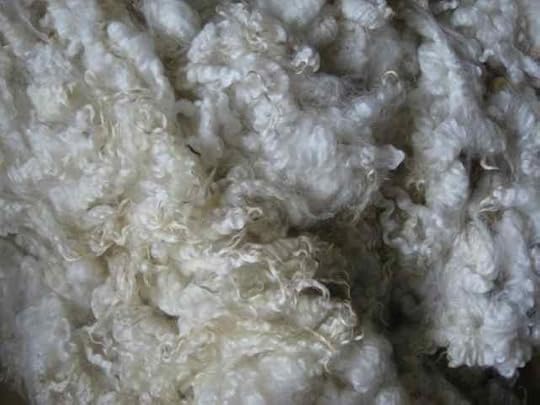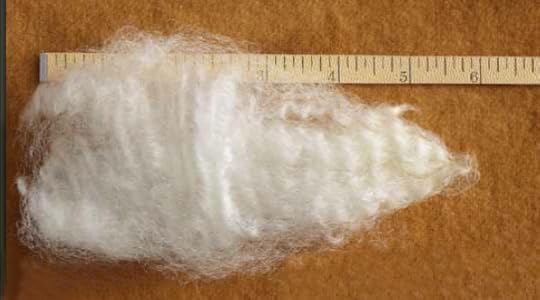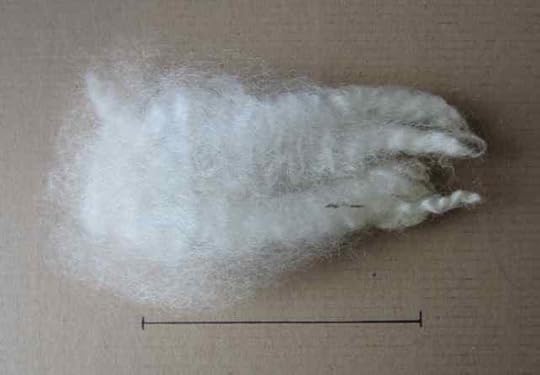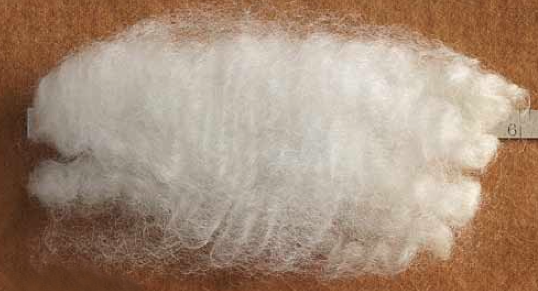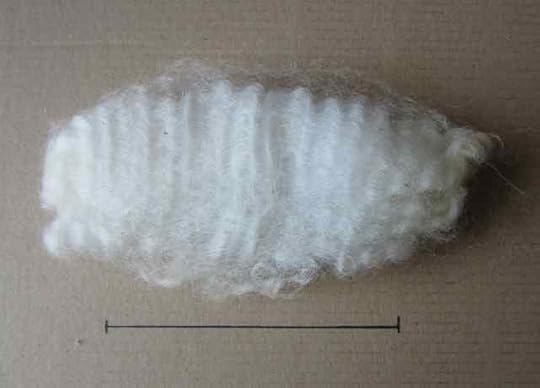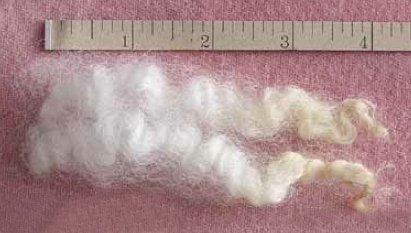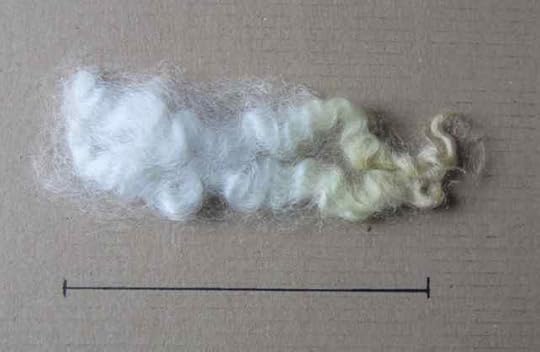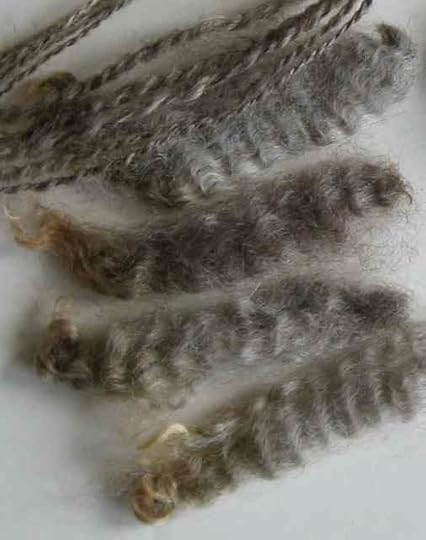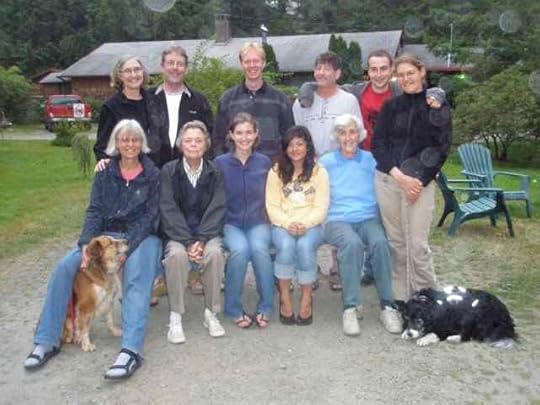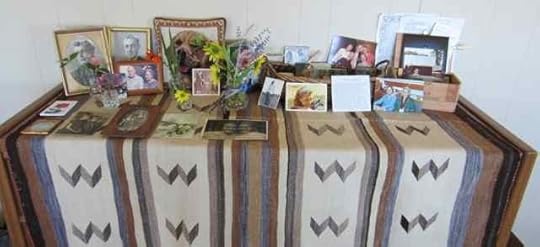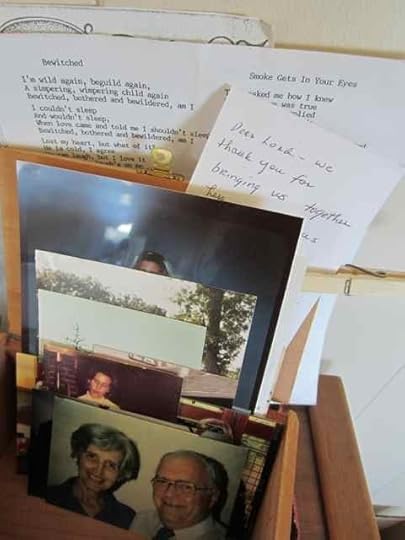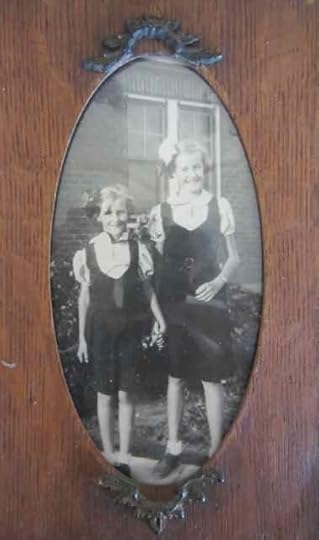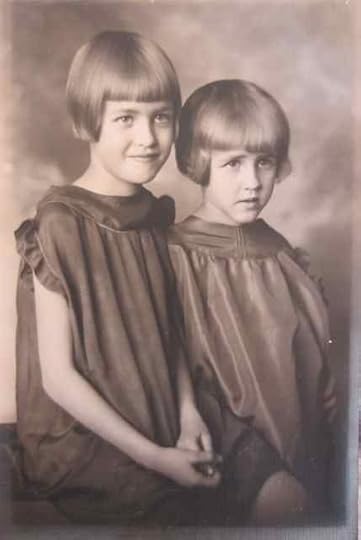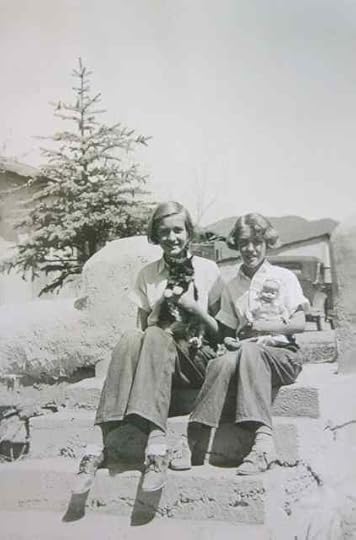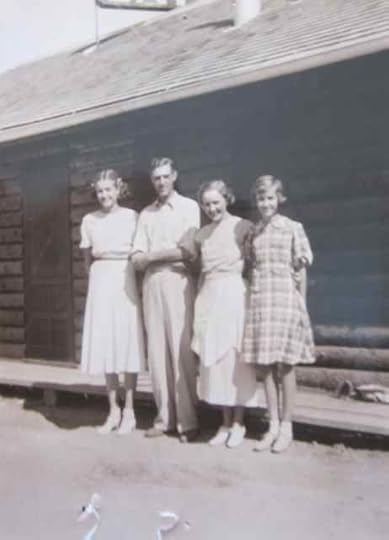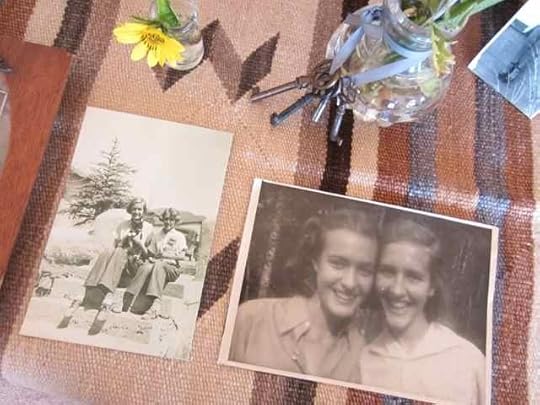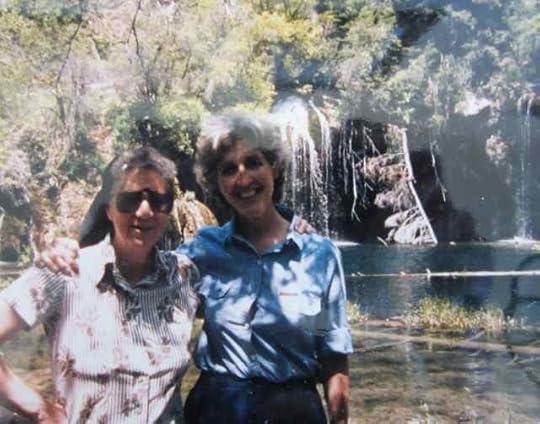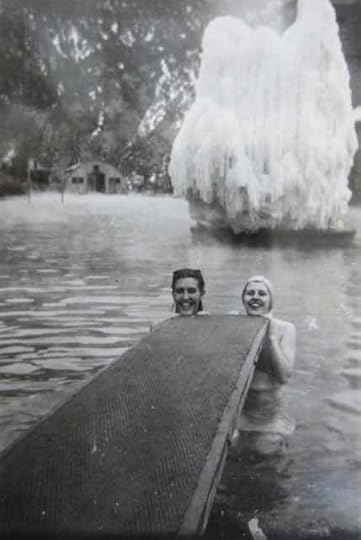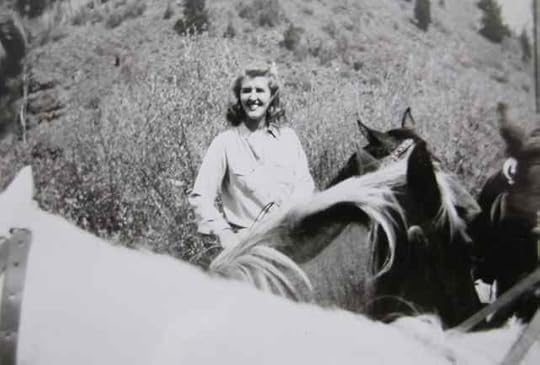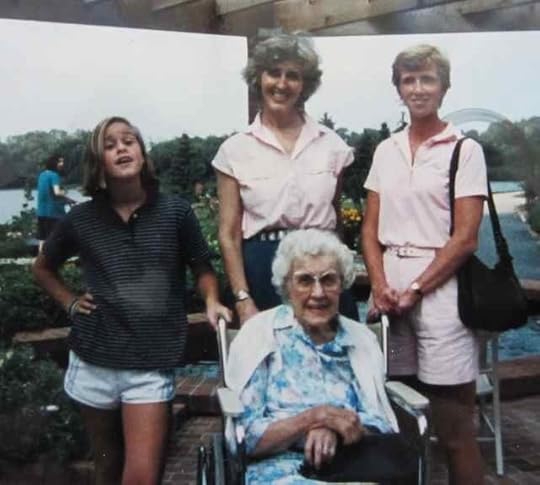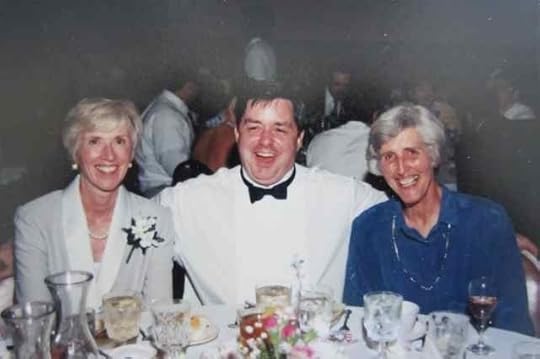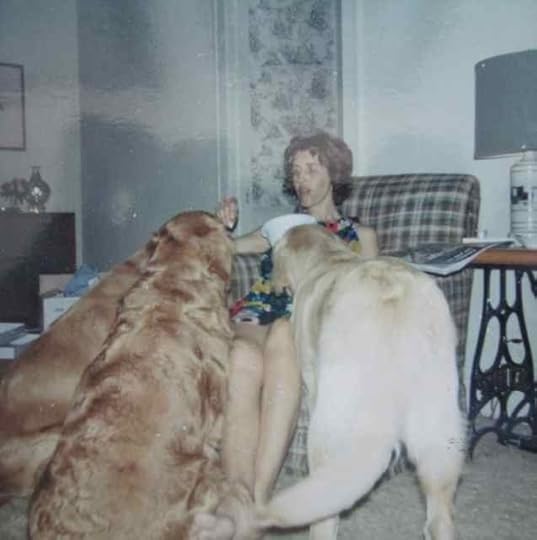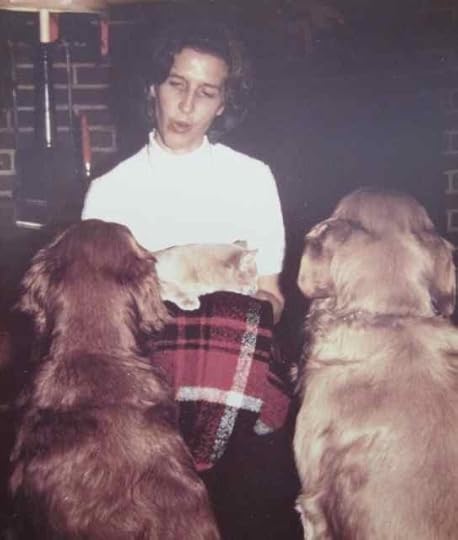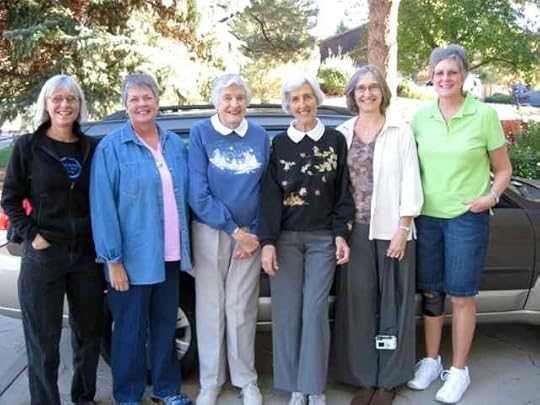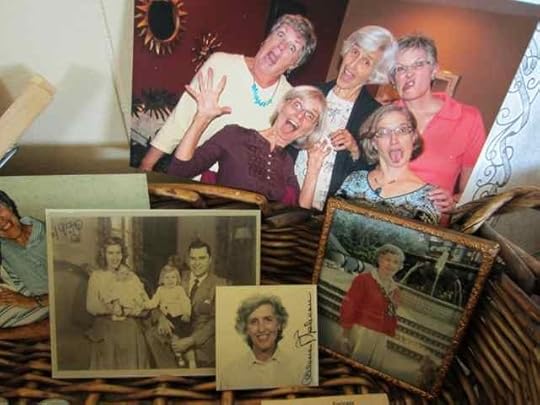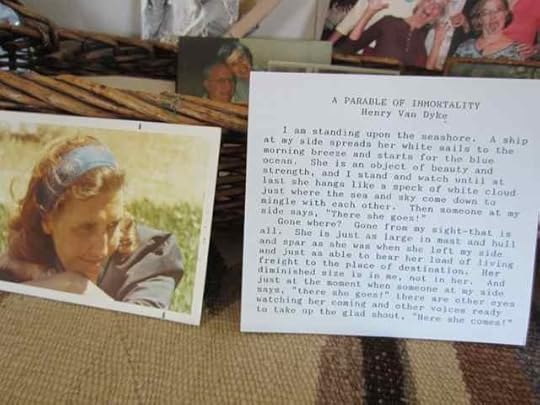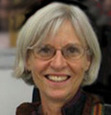Deborah Robson's Blog, page 6
October 12, 2013
Stones and vestiges
The landscapes of Orkney and Shetland display the layered remnants of about 5,000 years of human habitation. I've only been able to set a few experiential anchors in my understanding of those layers, and most of what I've seen (with a few exceptions, to be mentioned in future posts) has concentrated on the ancient reminders in Orkney. I look forward to broadening my acquaintance, but I've gotten a start. Even the oldest of the archaeological sites reflect the joint lives of humans and sheep in these landscapes.
Here are glimpses of some of that. As with all these posts, I'm only glancing past what I am doing, seeing, and thinking.
Orkney is, with notable exceptions, low and rolling and eminently farmable. Also extremely beautiful, in an understated way.
Stone
The Stones of Stenness is an early structure exemplifying monumental achievement, which is nonetheless human-feeling in scale.
Here's the monumental view: the stones are visible from far off, above the water and just under a third of the way from the righthand edge of the photo.
And here's the close view.
Not far away is the larger Ring of Brodgar. Under half the original stones remain (27 out of 60), yet the essence of the structure endures. It's a place full of spirit.
This stone was split by lightning.
From every angle and from every distance, the circle of stones intrigues.
It's easy to fill up with visions and impressions. Fortunately, it was possible to experience a handful of sites over a handful of days. So I was able to approach Skara Brae fresh.
Along the extended path to the site of this village (or, rather, village built on top of another village) have been set markers for other historical events, like the building of the pyramids (2700–2200 BCE). Skara Brae predates them by 400 to 900 years (3100 BCE).
Today, the site is a sculptural combination of stone walls and grass mounds, of hard and soft surfaces, of open spaces and enclosures.
It's sited beautifully by a broad bay.
Normal life continues nearby. The more modern building below is part of the site administration and maintenance facility. Grazing land, and a working croft (farm), lies adjacent to the bones of the simple and functional dwellings.
Skara Brae was buried in sand, revealed by a storm, and is at risk of disappearing again.
A few days later it was time to visit Maeshowe, a neolithic structure with ceremonial attributes, most likely used in part as a tomb. It appears from a distance as a gentle mound.
The approach, again, is through active agricultural land.
Photography is not allowed inside, so you'll have to take my word for the fact that it's well worth seeing. That's the entrance just off-center to the left.
Within that mound is a stone structure carefully and cunningly constructed from large slabs, blocks, and stones.
The entry has been oriented so that at the winter solstice, light comes through a long passageway with a particular orientation to the internal space. After about 4800 years (construction estimated at 2700 BCE), the beams strike slightly off their intended locations, due to changes in the earth's rotation—but only slightly.
At some point, the place was abandoned. At a later date (middle of the 12th century CE), Vikings found the structure and scribbled runic and pictorial graffiti on the walls.
The shifting light brought a dark sky and an illuminated mound as we returned to the car park (parking lot), contemplating the fact that both people and sheep lived here when the stones were moved to make these domestic and sacred spaces.
October 8, 2013
Thurso to Kirkwall (Scottish mainland to Orkney)
I'm very far behind, because I didn't have my laptop with me on some of the most recent travels. So here's one of a series of short catch-ups that won't begin to do justice to what I've seen and done. I actually prepared a lot of photos for this next bit, but we'll hit the high points in order to have a bare chance of getting to today, perhaps by next week some time, if I'm both diligent and lucky.
Thurso is at the far north of mainland Scotland and a ferry for Orkney leaves from nearby Scrabster. This is the early morning view from my hotel window—the Press and Journal opens up before dawn. (That is, of course, a reflection of part of my hotel room. I'm enjoying many of the inadvertent reflections I'm capturing as I photograph frequently through glass, due to timing or weather.)
Their sign says why:
Breakfast in the hotel set the tone for the day: relaxed and very good. Sorry that the next photo is blurry. The poster was behind a wooden pillar in the hotel lobby, right next to the reception desk and hard to miss but also a little hard to photograph, especially because I was not quite awake. It advertises the Cast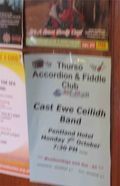 Ewe Ceilidh Band. The event is tonight, although I'm now in Shetland and won't be able to see what it's about. (Those who have caught any of my blog posts about our Border collie will know that her name is Ceilidh. It's pronounced KAY-lee.)
Ewe Ceilidh Band. The event is tonight, although I'm now in Shetland and won't be able to see what it's about. (Those who have caught any of my blog posts about our Border collie will know that her name is Ceilidh. It's pronounced KAY-lee.)
The ferry crossing was fairly short, and it was extremely windy out on the observation decks. Note the other passengers' elbows braced on the railing to keep a photo moderately steady. That's the Orkney island named Hoy.
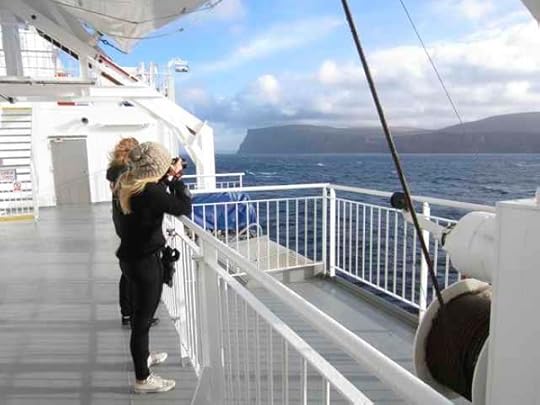
That pillar is the rock called the Old Man of Hoy, taken from inside the ferry:
The soft morning light disguised the Old Man a bit. To get a stunning photograph would require different timing and location.
Later, as we were pulling past Hoy, the conditions shifted.
Our arrival point on Orkney's Mainland was at the town of Stromness. (On this trip, there are mainlands in (1) Scotland, (2) Orkney, and (3) Shetland; they are all islands, although the Orkney and Shetland ones are more obviously so.)
It's a pretty place, which we zoomed through in the interest of getting settled over in Kirkwall, although we came back to Stromness later.
I'm taking a lot of photos through the car windshield (windscreen), and that reflection on the right side is a permit for parking.
I'll pick up a few of those later Stromness photos now, out of concern that I won't get back to them later.
There's lots of stone building (because stones are here and trees, for the most part, are not), and it tends to be a soft sandstone, so gets weathered. A lot of Stromness is being either refurbished or revised.
Looking down narrow passageways while walking along the main street reveals interesting vistas, large and small . . .
. . . leaving me with questions about who has created and who tends some of the unusual and charming combinations.
J. L. Broom, Bookseller, is a wonderful shop. It's small, but the selection has been made by a proprietor who loves books.
"Displayed face out" is, for the most part, not an option, because there are too many books. It's a browsing sort of store and spines are adequate. The Fleece & Fiber Sourcebook was there, as was Donna Druchunas' Ethnic Knitting Discovery.
Some of the shelves added commentary.
That bit advises:
Turn unwanted hair into
Coats for the family
I saw books that I have read and like—a clue that others selected by the proprietor are likely to be interesting. Yes, I bought a book or two. . . .
The owner said that The Fleece & Fiber Sourcebook is a regular seller (friends had spotted it in the window of the same shop last year) and referred us to the Northlight Studio, just up the street, as being owned by someone who had recommended it to him.
What another gem! This is Ros Bryant's personal studio, where she also teaches classes. On display were two exhibits, one of Ros's recent work (photo in a moment) and another of a group of small tapestries produced through a challenge called "Sea Journey," where each weaver took the same photograph as inspiration. The contributors came from a number of different countries. Some worked in parallel, meeting during the process, while others worked independently. The techniques and visions produced a collective show composed of purely individual creations.
Here's the introduction to the show:
Some more of the delightful pieces:
On a side table, several notebooks offered insights into the independent creative processes:
Another wall displayed some of Ros Bryant's own work from a recent series of explorations:
As someone who loves textiles, graphic design, words, letterforms, and calligraphy, I was most taken with the pairings of the pieces. And I didn't get a photo of the slate carving that I liked the best of all: yet I liked it best, perhaps, in the context of the others. I would love the whole wall of these. All. Together. To live with.
Also, the array of colors (working materials) along the shelf below tantalized.
We found an excellent lunch at Julia's, right across from where we'd arrived on the ferry from Kirkwall.
That corner of a yellow and blue sign is the readily recognizable indicator that delicious Orkney ice cream is available nearby.
And I was amused to note the font Papyrus engraved on the window, viewed, in this case, backwards.
One of the things I immediately appreciated about Ros Bryant's lettering is that it is informed by a well-grounded knowledge of letterforms and typography, and yet is not limited by any constraints that might come from that knowledge. Her work in the multiple media displayed (but did not in any way flaunt) a deep understanding of craft and the ability to launch from the foundations and produce fresh combinations and insights.
She's nice, too.
And has a splendid dog, Millie.
An excellent day becomes perfect when it includes a superb dog.
October 7, 2013
Scottish vocabulary lesson: dreich, drookit
First I learned dreich.
Then (this afternoon) I learned drookit.
Note the state of the map, which was fresh when I began the walk from the Lerwick Esplanade (near the town center) to my lodgings. Without that map, I'd still be out there. As it was, I overshot my turn by about a quarter-mile. (It's hard to tell which rotary leads to the appropriate road, especially in the dark.)
And here is a closer view of drookit:
I had on wool, or I would have been chilled besides. By the end of the walk, my trousers were soaked through so much that water was beginning to saturate the wool socks inside my waterproof hiking boots (the boots were dry . . . except starting to be damp inside). I would have called for a ride, but mobile phone signals are off-again, on-again in Lerwick, and they were off-again all the way from where I was to where I needed to be. Fortunately I stayed warm throughout, although I was ready to quit squishing by the time I reached shelter. Which was ten or fifteen minutes before I needed to leave again for the opening ceremonies of Shetland Wool Week.
As I came up the last hill, I looked across the road and saw a ewe sheltering on one side of a small stone enclosure with her lamb on the opposite side, both somewhat shielded from the wet. If it hadn't been so dark, and if I hadn't been soaked, I would have tried for a photo. (As it turned out, my camera was damp, too.)
Thanks to Jeni for being there and taking the photos and to Alison for suggesting the Scots words and confirming that I have applied them correctly.
October 1, 2013
Moving north
Before leaving for the north, we washed one of the Ryeland fleeces from the Scottish Smallholder and Grower Festival. It will dry while we're traveling. It's a good thing we had a nice bottle of Power Scour handy.
Clouds and no-clouds: parts of the day varied, but as we drove north the sky did tend to clear up.
Just like at home, there was road construction and we had to wait for alternating one-way traffic.
Here's a portion of a map of northeastern mainland Scotland, with some of the locations about to figure into this post.
The plan was to have lunch at Dornoch, but as it turned out, on a weekend (especially one with beautiful weather, I suspect), reservations were required at every tempting place in town. Fortunately, we'd had a good breakfast.
We did walk around town and I learned that the stepped stones along the rooflines are a particularly Scottish architectural detail.
As we proceeded north, we stopped for a view looking across toward the North Sea. This particular spot may be at the opening end of Dornoch Firth or perhaps the wider portion where it's opened out into the sea. I'd have to look up its specific location to tell; it was by the Wolf Stone, Brora, East Sutherland.
Ah, Berriedale. When I was in Scotland the only other time, for UK Knit Camp, I had some fantasies of traveling a bit farther north. That didn't happen, but in the process I learned that a few days before my arrival, Clan Gunn was having a gathering. The Robsons are traditionally a sept of this clan ("from the fifteenth century . . . the Robson Gunns had their seat in Braemore in south east Caithness"), although there is apparently an unrelated line of Robsons elsewhere. As many Americans are, I'm a mix of heritages, among which the Scottish and Norwegian portions have made the most indelible (or at least family-memorable) marks. In terms of direct connection, the Robsons to which I'm related have been traced to mining communities in England. Some time we may trace them further—or someone in the family may already have done so. Regardless, I grew up knowing what the Gunn tartan looked like (exactly) and knowing what the clan motto was ("aut pax, aut bellum"). The links may be tenuous (or not), but at the very least they offer morsels to entertain curiosity.
From the exploration-of-possibilities component of that earlier trip, I had on my computer a few notes. Because we had skipped lunch, we had all afternoon to travel a relatively short distance to Thurso. Thus we enjoyed the opportunity to wander among the places named in my notes. I couldn't access the maps for which I had collected links (no internet connection), but we had enough for an enjoyable ramble.
My notes suggested that the Braemore to which they referred might be the one located some distance off the main road, between Berriedale and Dunbeath, and that there was a clan museum in Latheron, all towns arranged along the sea and directly on our route.
Berriedale had a lovely church and associated multi-century graveyard with abundant and varied surnames, a few of which were Gunn.
The road past the church, leading off away from the sea. This was a road not taken.
An observation from a William Steven, a crofter and joiner who died in 2007 and seems to have had the right idea:
Here's another view from the churchyard:
And in another direction:
As we headed toward Dunbeath, we saw a sign leading to the left toward Braemore, possibly the "correct" one, located about six miles down a paved but narrow road.
At the end of the road, there was a splendid valley . . .
. . . a small bridge . . .
. . . and a means of modern communication, possibly due to the lack of mobile (cell) phone coverage.
The roads in all directions became private.
So we looked around,
. . . and turned back.
Now we reach the fiber content of this episode. While retracing from Braemore, I stopped to climb across a narrow ditch and up into the heather to get a photo of bog cotton.
And not long after that, these friends were on the road, but quickly skittered off.
After rejoining the main road, we went along to Latheron, where my notes suggested that the Gunn clan had an interesting museum.
We found it, with a big OPEN sign.
It was the last day in September, but unfortunately the OPEN time did not include a Sunday at 4:30 p.m.
So we browsed around the churchyard . . .
. . . which had splendid views . . .
. . . . and neighbors on the other side of the wall.
We neatly made it it to Thurso in time for a superb dinner at the Pentland Hotel. I had spaghetti con aglio, olio, e peperoncini. Delicious.
___
I'm quite far behind on posts versus adventures. Tomorrow I head to North Ronaldsay with Liz Lovick. I'm not sure I'll be able to take my laptop: extreme weight restrictions on the flight, and I may want to bring back some fiber.
September 30, 2013
Scottish Smallholder and Grower Festival
Short and rough report again. Working while in transit and with limited internet access. At the moment, I'm on the ferry Hamnavoe from Scrabster (Scottish mainland) to Stromness (Orkney).
Saturday: The Scottish Smallholder and Grower Festival at Lanark Agricultural Centre. Thanks to Jeni for telling me about this event!
Loved this interlude with a Border Leicester ram, a wee one, and I suspect grandfather in charge.
Here's the handsome ram in a fuller photo:
He's a very British Border Leicester: the upright set of the ears is more pronounced here than in most (all?) North American sheep of this breed that I've seen.
One GREAT fun moment was when I glanced out of the corner of my eye and caught sight of a fleece type that we don't see at all in North America: one of the very sturdiest of the longwools. It was a Greyface Dartmoor ram (tup) lamb! Just look at that hefty fleece. . . .
That right there made my day.
Texel was represented as well. I tried to find a photo of the North American Texels that I took at the Maryland Sheep and Wool Festival for comparison, but haven't been able to turn it up. Those did not have the very blocky heads that I've come to see as one of the strong breed indicators in the British Isles. (The breed is originally from The Netherlands.)
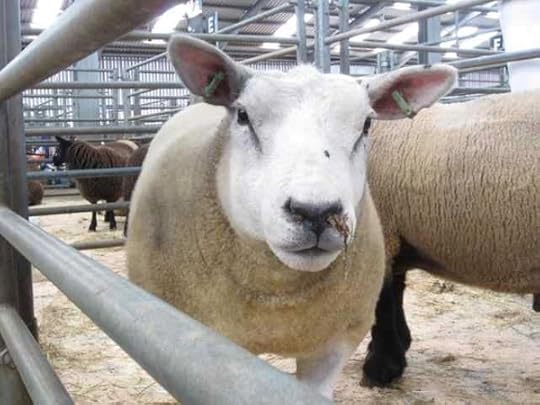
Differences in the same breed from one environment to the next makes some sheep identification very challenging. It's already a bit of a gamble to name a sheep breed without checking with the shepherd: there are many breeds, some closely related, and then all the crosses—before we even get to regional variations.
Jacobs are easy to recognize, although the British and North American are so different that they're considered different breeds. Here's a British one from the festival on Saturday:
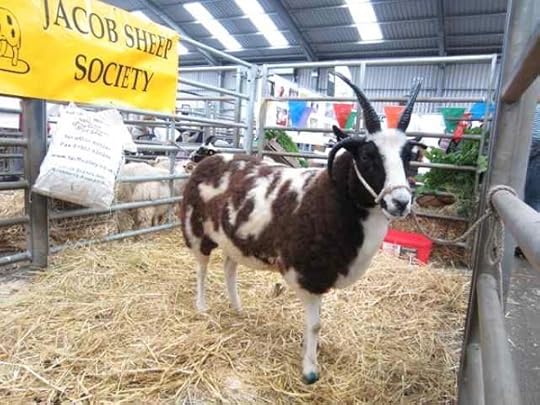
Such a handsome felllow! And half again as big as a North American Jacob ram, this one from the Maryland Sheep and Wool Festival this past May.
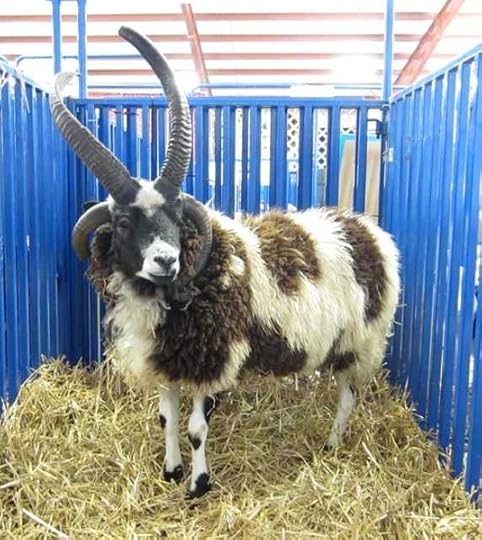
Different body shape, too. The British have been bred to be larger and produce more meat. Here's another North American one for comparison (at the Sedgwick County Zoo in Kansas):
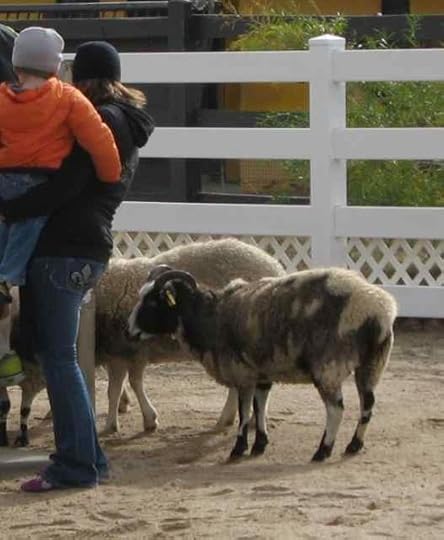
They're small sheep in North America, and mid-sized in the British Isles. Here's that British Jacob ram next to a Romanov ram:
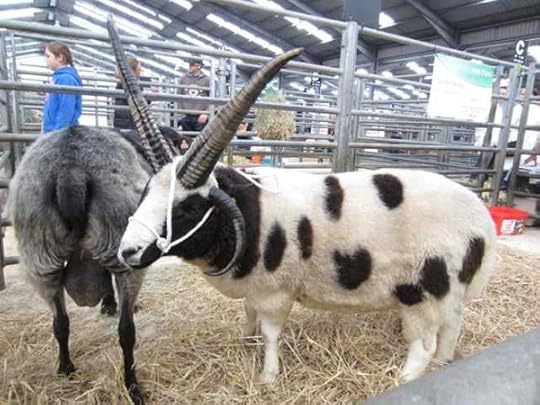
Note that the Jacob's fleece has been fitted very differently than the American one that was prepared for show (the one in Maryland; the Jacob in Kansas was just hanging out at home and not dressed up to go out).
And because we can, let's look at that Romanov fellow as well:
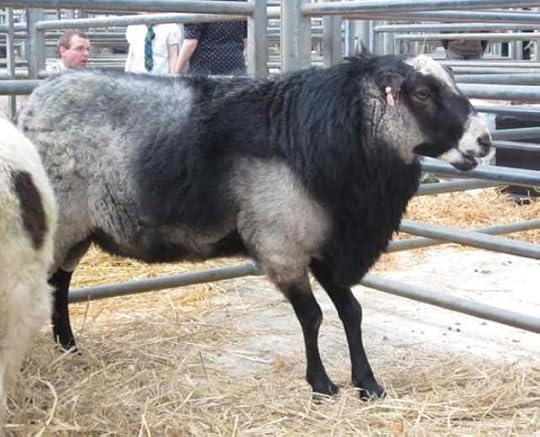
There were lots of other wonderful sheep, and I came away with a lot of photos.
A forthright Wensleydale ram:
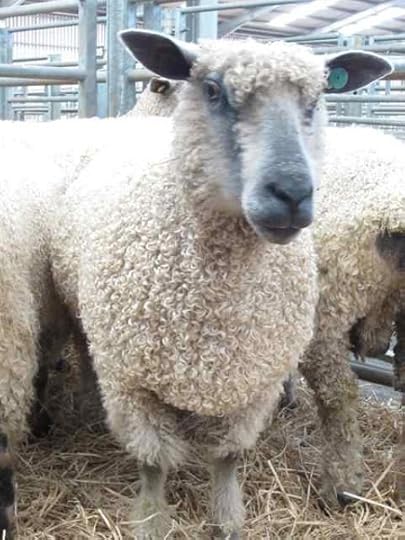
Colored (coloured) Ryelands:
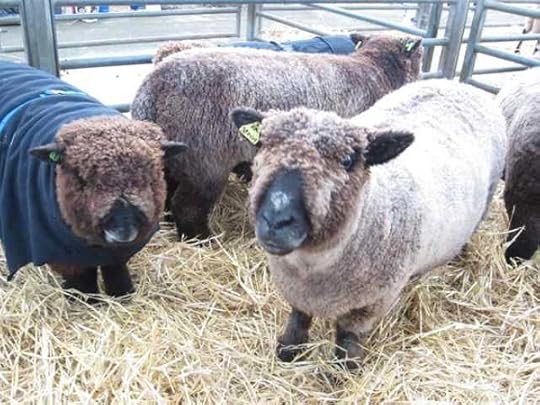
Oops: the next photo. These came away with me. Ryeland. Two fleeces. The Explore 4 retreat next March may include Ryeland as one of the four featured breeds. . . .
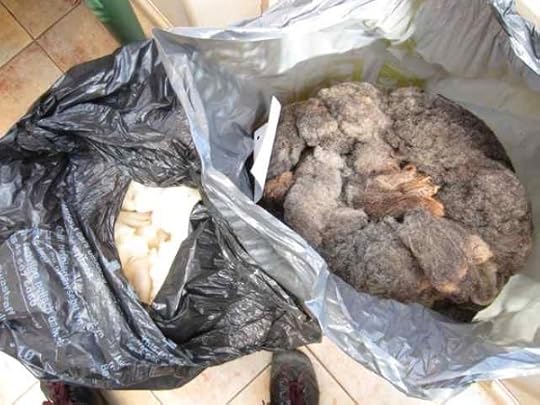
Okay. The ferry's approaching Orkney. Time to quit.
September 27, 2013
Edinburgh and not
Another day: not as rainy. Those are cows up on the hill. They were there in the rain, too, of course.
This is a day of a trip into Edinburgh. Unfortunately, leaving my new buddies behind.
Including the less forward one who is in the process of deciding I'm okay.
The way not to mess with Edinburgh traffic is to take the train.
Arriving at Princes Street, which has been modernized, or as my friend Susan would say, "remuddled," I got set up with a pay-as-you-go mobile (cell) phone.
Then got a friend-guided tour of parts of what is called new town, being primarily Georgian (with Victorian infusions), as opposed to the portion on the opposite hill, old town, primarily medieval. One Victorian edifice, somewhat reminiscent of the William Wallace Monument I saw in Stirling in 2010, is the Sir Walter Scott monument.
In this case, though, we stayed at ground level. Scott did, too.
We strolled through part of the Princes Street Gardens, and got a good view of Edinburgh Castle.
This trip is, in part, an exercise in being introduced to things I'll need to actually see another time.
It's also about serendipity, like the teasels that caught my eye in the garden. They are useful in wool working for raising the nap on fabrics.
After lunch, we wandered along and found Kathy's Knits, which specializes in British yarns: "100% of our stock is sourced from small, independent farms and producers from within the British Isles." There were many tempting items in the shop.
I left with four balls of wool: I need to stay focused right now. Interestingly, all four of my balls came from Blacker Yarns in Cornwall. (It's not that I wasn't tempted by other items, but I either already have them in my supply boxes or they don't fit my current need for samples).
Below: two balls of a Hebridean/mohair blend specifically spun and dyed for Kathy's Yarns (hence the logo); a ball of the new St Kilda laceweight (combining Boreray, Soay, and Shetland); and a ball of the original St Kilda laceweight, of which Kathy's bought the entire stock. There was one ball left, and when it became apparent that I would give it a very good home, I was allowed to purchase it. It (appropriately) got its own private plastic bag for protection.
Then it was time to catch a train back out of the city.
At the end of the railroad line, there was very different scenery on the drive from the train station back to the house.
And this is the road down which the dogs got their walk.
Scottish Blackface sheep graze nearby.
The more reserved dog keeps coming a bit closer.
The dogs in motion:
It's challenging to get clear pictures of them. I have more images like the one just above than like the others where you can actually identify them.
Good night.
September 25, 2013
Arriving in Scotland
Friends have asked for quick notes on the trip as it occurs, and have said it's okay if those notes are short and unformed. They will be!
I flew British Airways from Denver to London/Heathrow to Edinburgh. I left Monday and arrived Tuesday and I think (but am not entirely sure) that it is now Wednesday morning. My computer says it is, and I adjusted the time and date after I got here, so it's probably right.
London was experiencing some fog, so the Denver/Heathrow flight was ever-so-slightly delayed, which meant I missed the connection to Edinburgh. The Border Agency process was quite quick and painless, but the preceding effort of getting booked onto another flight and acquiring a new boarding pass took, I think, two hours, even with the kind intervention of a British Airways employee who took me under his wing and let me use his mobile (cell) phone to call my friends here and alert them to the problem and also rebooked my flight through the same device, which saved me probably an hour in another line. It still took about two hours to get through the sequence of lines that followed that.
When I got to the terminal, I spent a lot of time watching this sign:
And seeing this:
My original flight was at 13:40. The rebooked one was at 15:40. (And delayed. The Edinburgh flight shown in the first photo as scheduled for 16:35 left before ours did.)
When I arrived, I attempted various methods of contacting the friends who would be meeting me. The best technique ended up being (1) e-mail to friend back in US and (2) she texts them on her mobile (cell) phone. (My e-mails direct to those friends ended up being refused by the server, for reasons never clear.)
When I arrived at their house, it was clear that I was in the right place. First, it is lovely and there are good dogs. Second, there was this sitting next to my bed:
William Wallace's figure is especially impressive (he's the redhead in the middle, and several of my family members have carried his names up through the centuries). I could also knit a Highland coo, a Nessie, or a somewhat mischievous-looking sheep.
Or a whole flock.
Although I believe that I'd change the yarn specs. Instead of polyester for the fleece and a wool/microfibre/cashmere blend for the faces and legs, I'd be inclined to use, oh, why not a Suffolk for the body? (since these surely appear to be Suffolk sheep) and perhaps a very dark Soay for the heads and legs—or Black Welsh Mountain, or Balwen, or Zwartbles, or a black Ouessant, or, for a softer result, a nice black Shetland. For the body, to get that fluffy effect for which the synthetic yarn was likely chosen, I'd need to play around with some different stitch patterns. But that could be amusing. Until I'm over jetlag, though, these will all just stay in the fanciful thoughts department while I enjoy the book and the imaginary knitting.
Today is a splendidly dreich day, one I think will be excellent for not doing much other than recalibrating my mental and physical clocks. (I think it is not quite usual to use "splendid" and "dreich" in such close association, but I think the combination works right now.)
(Yes, those are drops of water dripping from the upper edge of the window through which I took the photo.)
I think tea is in order. I know where there is some.
September 16, 2013
Tough times
It's been quiet around here because life has been intervening.
Yes, we are in the area affected by the Colorado flooding, but our personal household is dry and has utilities, and even when the roads have been closed in all directions away from where we are, we have had access to groceries and other essentials. Much of my life is currently following its normal rhythms, although with a few differences. A group of us get together regularly to write. This is one of the places. We use the basement. It is, miraculously, not flooded, although close to the river.
We are very concerned about everyone still stranded or lost or with their houses swept away by, surrounded by, or filled with water. We await news about friends, especially those with sheep and those I've met through plein air painting connections over the years, who tend to live in more beautiful and more vulnerable places than the one we're in.
This past weekend was the memorial service for one of my longest-term and dearest friends, Ginny Cross. Ginny and I didn't get together all that often—for dinner and conversation every few months—but every time we did get together mattered. Miss you more than words allow, Ginny, and I'll remember your birthday for you tomorrow, with sadness mixed with joy that you were part of my life. And, as I told you shortly before you left this plane, your friends, including me, will be publishing your novel. It should have been published when you were here to see that happen, but we'll carry on. I'm doing the layout and design, and it will be an honor.
Thanks to our mutual friend Cherrie for the photo. I didn't have any.
Early this morning my cousin Christie Ehmann died. She was three months younger than me, and despite the fact that her family lived in Colorado and mine lived in Illinois, we four girl cousins grew up together, often visiting and traveling as a "clump." Since I've lived in Colorado, we've been a couple of miles apart. When I first moved to Colorado, we happened to be in the grocery store together and suddenly there were two fully grown-up women in the produce section picking up heads of lettuce and flinging water at each other and laughing like a couple of ten-year-olds. Again, our times together weren't frequent but they were vitally important, and I thought we'd have a lot more of them. The family became aware of Christie's diagnosis with inflammatory breast cancer three weeks ago tomorrow, and already she's gone.
This was 2008: cousins and aunts, in age order for both generations, from left to right:
Me, Christie (spirit left this manifestation this morning), my aunt Ginny (died three years ago), my mother (died this May), my sister Meg, and my cousin Colleen. I'm so glad we took that trip. (You'll notice they're all more put-together than I am. This is an eternal truth, something to count on in the shifting sands of life.)
More soon. Teaching has been wonderful, and the ongoing Shetland project is giving me a strong and blessed pull forward. As are family members and friends, human and canine.
One day at a time.
May all beings be happy.
May all beings be safe.
May all beings be free from suffering.
September 4, 2013
Spinzilla blog tour: Fast and easy wools to spin
So. There's this contest coming up in conjunction with Spinzilla, a community spinning-education event being sponsored by The National NeedleArts Association (TNNA) and its Spinning and Weaving Group (SWG). The hullabaloo will occur during National Spinning and Weaving Week, October 7 to 13, 2013, and the idea is to form teams, hosted by TNNA and SWG members, and see which group can, collectively, spin the most yarn during that week.
I think this will involve some getting together and egging each other on. Spinning with friends is always a good thing. If you want to join a team, you can sign up at Spinzilla.org between now and September 23, 2013. Teams are not necessarily local: Storey, the publisher of The Fleece and Fiber Sourcebook and The Field Guide to Fleece, is sponsoring a team, headed by the delightful and incomparable Sarah Anderson. (To my friends outside North America: because this is the first year
and kind of a test run, they're limiting participation to the U.S. and
Canada, and will see if they can increase the geographical scope beyond
those boundaries next year.)
There's a small registration fee, with part of the proceeds supporting spinning education through The Needle Arts Mentoring Program (NAMP), a non-profit effort begun as a way to get at-risk kids involved in fiber work that now offers programs more broadly through collaborations with schools and other youth activity groups. Skills include crochet, cross-stitch, knitting, needlepoint, and now spinning; mentoring programs, although individually designed to meet the kids' needs, are generally six to nine weeks long, with an hour of mentoring each week. It's a cool deal.
Okay, that's enough alphabet soup.
I've been pleased to be asked to be part of the six-week, six-installment blog tour in conjunction with Spinzilla. Here's the list of blog-post presenters and topics:
Week 1, August 27, 2013: Jillian Moreno, "Creating a Yarn Vision: Knowing What Yarn to Spin"
Week 2, September 4, 2013: That's where you are now. Deb Robson, "Fast and Easy Wools to Spin"
Week 3, September 11, 2013: Felicia Lo, "Spinning Hand-Dyed Yarns"
Week 4, September 18, 2013: Beth Smith, "Fiber Prep for Production Spinning"
Week 5, September 25, 2013: Sarah Anderson, "Twists and Singles"
Week 6, October 2, 2013: Liz Good, "Resources for Measuring Yarn"
I was asked to talk about "breeds for spinning," a topic that was a little too broad for a blog post. (For background information on sheep breeds and how to suit the wool to
the project, I did a free class for Craftsy.com called "Know Your Wool." Six video lessons on the basics of wool-plus-craft, focusing on knitting but with a spinner's-eye view of the yarns.)
So here's what I proposed instead:
Sheep breeds that grow easy- (or fast-)to-spin wool
Two questions that meet in the middle:
Although there's one set of answers, there are two questions that connect in the middle with these breeds:
What wools are good for experienced spinners to spin quickly with?
and
What wools are good for beginning spinners to learn on?
The breeds I'm about to suggest share the following characteristics, for the most part (some individual fleeces from these breeds will go outside these ranges)
fiber lengths in the vicinity of 4 inches (10 cm), more or less (around 3 to max 6 inches, 7.5 to 15 cm)
moderate fiber diameters (nothing too delicate or too wiry-strong, I'm talking 28 to 37 microns, more or less, although you won't have that information handy; just trust that the breeds I'm going to mention are in that ballpark)
moderate crimp (since a little elasticity is a good thing in this case, and a lot of it can be more demanding)
open staples (even when you're starting with processed wool and won't see this directly, as in top or roving, this quality ends up making a difference)
In the 1970s, when spinning was being "rediscovered" by a bunch of us, there was something called "wool for handspinning" which fit that description. That was before spinners had "rediscovered" that they could spin just about any fiber that came down the line, if they wanted to, and so now, if you want to be accurate, just about any wool is "wool for handspinning" (the felted stuff—not so much; otherwise—fair game). The "suitable for handspinners" label, smelling faintly of mothballs, does still sometimes show up in descriptions of wools.
But there's something to that package of qualities. These are wools that beg to be spun by hand, without requiring much of the spinner. If you're new to the wheel or spindle, they'll support your efforts. If you're experienced, you'll be able to crank your equipment to the max and stay relaxed.
The answers that connect those two questions:
Although I could go on all day about wonderful breeds to spin, we're in a hurry here. So we're going to highlight the following wools:
Border Leicester
Coopworth
Perendale
Romney
They're alphabetical. (I know, I said that was enough alphabet soup, but I don't want to play favorites. They're all lovely.)
If we're really in a rush, we're going to find them in top or roving form. Otherwise, they're easy to wash and can be spun from the locks (teased open), from combed preparations, or carded. Pick your drafting method, or just punt. They'll go with you.
Now a few more details about the breeds I've chosen, which will likely not be the same breeds another person would send you to. Or maybe they would. Regardless. When this topic came up, they're the ones that leapt to mind. (Fortunately, I also had an article deadline to meet. Otherwise I'd feel bad about all the other breeds I'd left out, and I'd still be sitting here trying to pick the perfect suggestions.) Your team leader may have other suggestions, too, and these might not be the breeds I'd choose if I were sitting with a beginner and considering a casual spinning lesson. But we have to start somewhere (see me waffling? I don't want to leave out any breed that's remotely suitable).
The beautiful photos below (on the hand-dyed wool fabric backgrounds with the tape measure visible) are by John Polak, from the new The Field Guide to Fleece: 100 Sheep Breeds and How to Use Their Fibers. The more prosaic photos are my reference snapshots; on those, the drawn reference lines are 4 inches (10 cm) long.
Border Leicester
While it's true that Border Leicesters can grow wool quite a bit longer than we're aiming for—the staple lengths run between 4 and 10 inches (10 and 25 cm)—most of what you'll find will be in the vicinity of 4 to 6 inches (10 to 15 cm). Lots of the classic longwools, of which this is one, are shorn twice a year. (Yes, you can cut staples in half, if you want to. Think of it as shearing mid-year.)
Yes, this one looks a lot longer than I'm suggesting, but it's a year's growth:
When the wool of this breed goes a full year without shearing, the tips can get a little stuck together. But if you have a more moderate length, they'll be far less likely to do that.
See some representative samples I've had? Although the middle locks are from the same fleece as in the photo above, most are in the shorter range, like those on the top and bottom. My favorites are about 4 to 5 inches (10 to 12.5 cm) long.
Here's a Border Leicester fleece I bought recently (shown after washing):
Coopworth
Coopworths grow wool on the longer side of what we're aiming for, but the wool is so open and lovely that you'll want to experience it, and it's speedy to twist.
Perendale
Perendale staples are a little shorter, in general, than the other breeds I'm listing. But all are in about the same ballpark.
Romney
There's a lot of variation in Romney wools (length, crimp, coarseness/fineness), but the fleece is a classic starter-wool and also versatile for experienced spinners.
A few valedictory notes
In all of these breeds, prepared roving or top will be middle-of-the-road in representing their qualities. If you're selecting an individual fleece, you will have the option of finding a comparatively soft one (suitable for cardigans, hats, mittens, and so forth) or a sturdier one (for bags, pillows, or rugs). None of them will be next-to-the-skin soft. That kind of spinning will both slow you down and require more attention.
These particular wools will work well for speed-spinning no matter whether you are measuring by weight or by yardage (the Spinzilla contest will measure the latter). Their fiber lengths are sufficient that they can be made into comparatively low-twist yarns in a variety of grists. If you want to crank out length, put in enough twist to hold the yarn together nicely and no more. Again, if you're going for maximum length in minimum time, you'll be spinning singles, and comparatively low-twist singles from long-fiber wools can be used as-is (without plying) without producing skewing in the resulting fabric.
New to the craft? These are great wools for practicing not overtwisting, just because they will tolerate low levels of twist! Be sure when you are drafting that you are keeping your hands farther apart than the length of the fibers (you don't want to be holding onto both ends of a fiber at the same time: it won't draft at all). These will give you good practice at not crowding right up to the orifice and hanging on for dear life. They're also good spindle wools. Consider using a wrist distaff, because these fibers will spin up quickly enough that you'll want to keep more fiber supply handy than if you were spinning itsy bitsy Merino or Romeldale. (There are a number of styles of wrist distaffs. A good video demo here on Flickr of how to use one of them.)
Most of all:
Have fun.
(If you want rare-breed credit, go with the Border Leicester, which was added to the Rare Breeds Survival Trust's watchlist this year. But every one of these wools is worth supporting with your spinning wheel.)

August 21, 2013
Remembering Mom
The family is gathering this week to catch up with each other, and to remember my mother, Allene Robson, who died May 31.
Here's a representative sample of the group, including Mom (in the light blue sweatshirt), at a previous August gathering:
We drove and flew and got here any way we could, put together a collection of photos and other items, and held a private, informal remembrance: we sat in a circle and told stories. Each of us learned something new about her to treasure.
Some of the items included in the collection above are songs and quotes we found in Mom's desk and other papers.
Mom sang and whistled. We have lots of memories of music.
Many of the photos include both Mom and her sister, Virginia, two years older, who died a few years ago.
They were close all their lives.
Iowa; Oklahoma; Taos, New Mexico; Glenwood Springs, Colorado; and more.
Virginia, my grandfather, my grandmother, and Mom, recovering from the Depression.
There were a lot of tiny bottles and vases in her cupboards, for just a few flowers, here and there and everywhere.
With a high-school friend whom she kept in touch with all her life:
Shy and adventurous, always warm, always ready to see the best in life. . . .
And with neighbors and long-time friends (the first of these two photos includes my grandmother, her mother, as well):
Friends everywhere, and in many forms. . . .
That's my three-legged cat, Wow, in her lap, and the Goldens are Taffy and Banana.
The pilgrimage back to Taos: me, my cousin Christie, Virginia, Mom (Allene), my sister Meg, my cousin Colleen. Two cars full and a lot of laughter. I'm so glad we made it happen.
Virginia at lower right, below the same set of cousins, Mom, my sister, and me. . . .
Among other things, Mom left this behind.
The paper is a copy of a short piece called "A Parable of Immortality," attributed to Henry Van Dyke.
Kevin, my brother-in-law's brother (who's in the first photo), e-mailed the rest of us the day after our gathering, in which he participated: "I always thought Allene and I got along great.....and she made me feel happy, and funny, and interesting....(now that's a difficult task)..... because she always put others before herself......but I've come to know that she pretty much got along with everyone she came to know.....(so maybe I'm not as special as she made me feel...still made me feel great)...."
Kevin, you are as special as she made you feel. Her interest and her affections were the clearest and most trustworthy I've ever experienced in a human being. She found you interesting because you are, of course, and one of her gifts was to both perceive and communicate that sort of connection.
Miss you more than I can say, Mom. Love you forever and ever. I hope you and Ginny are laughing again together.

